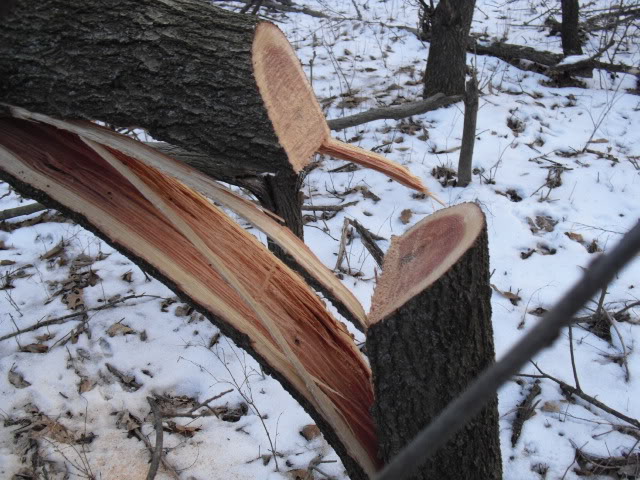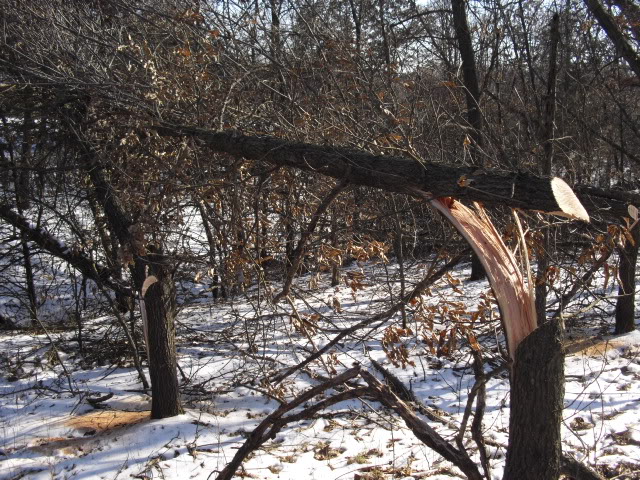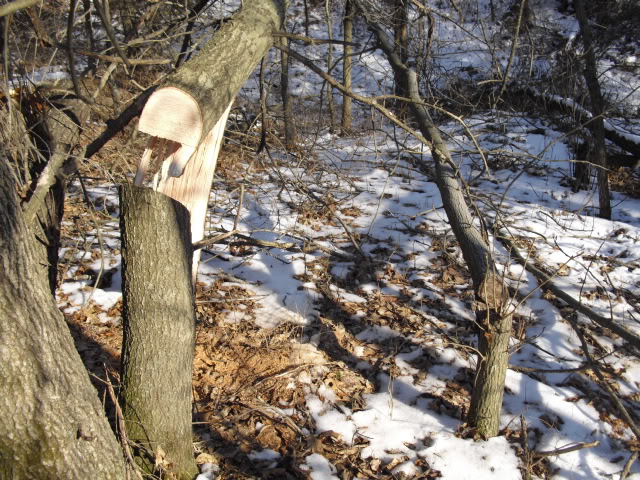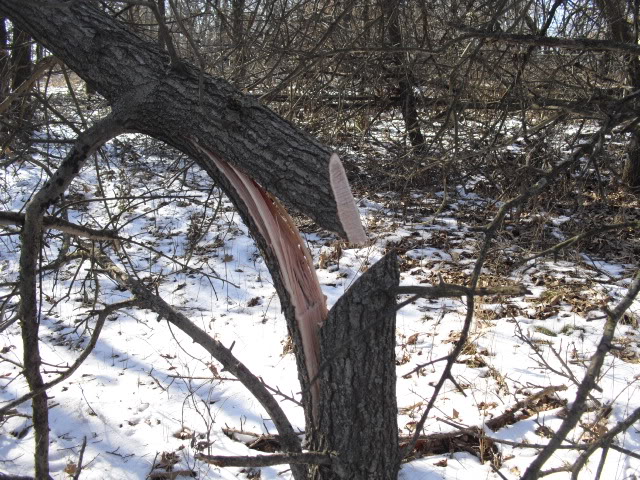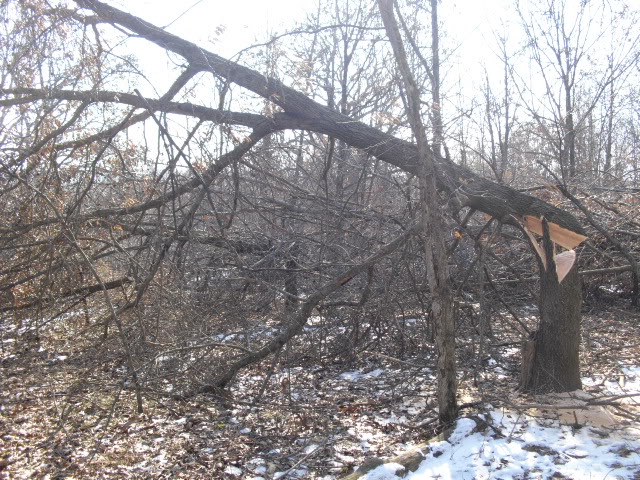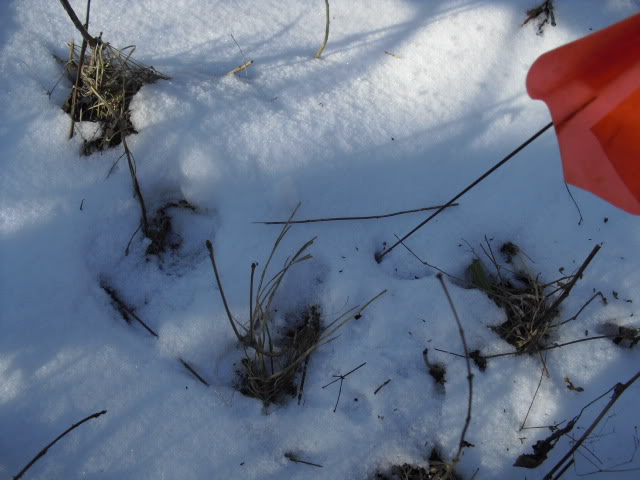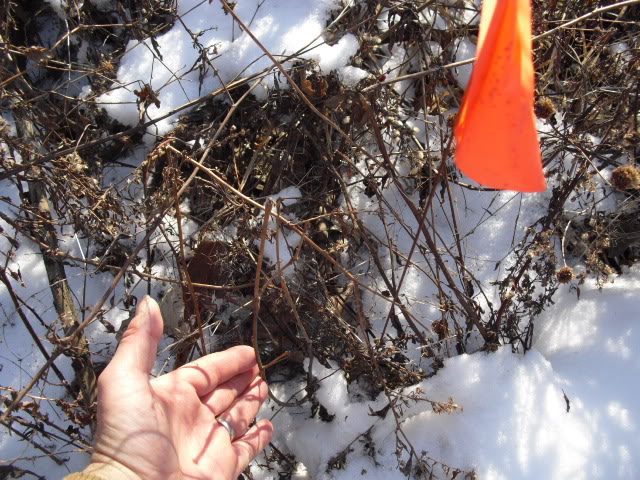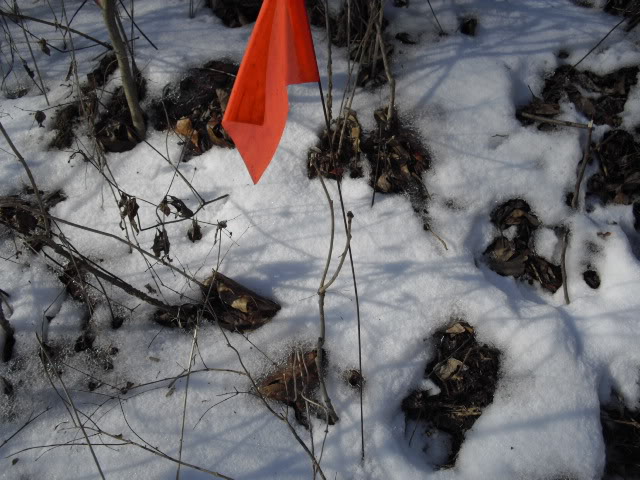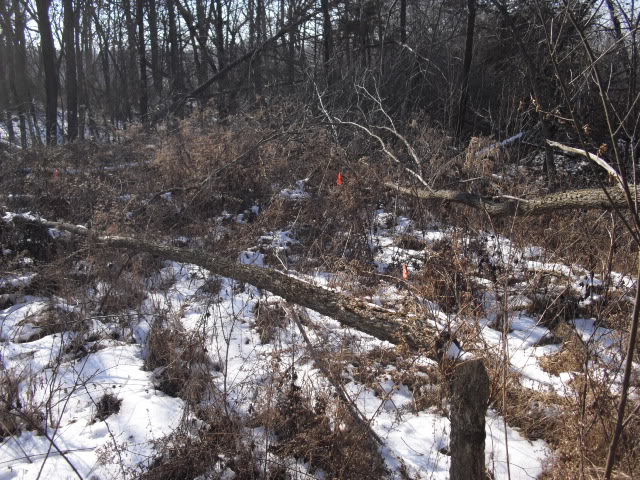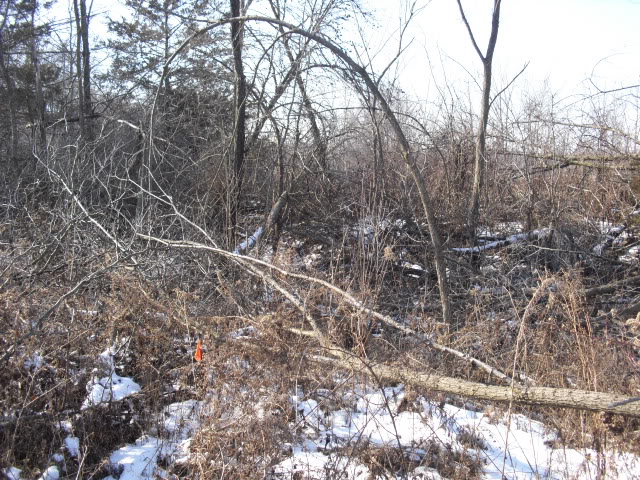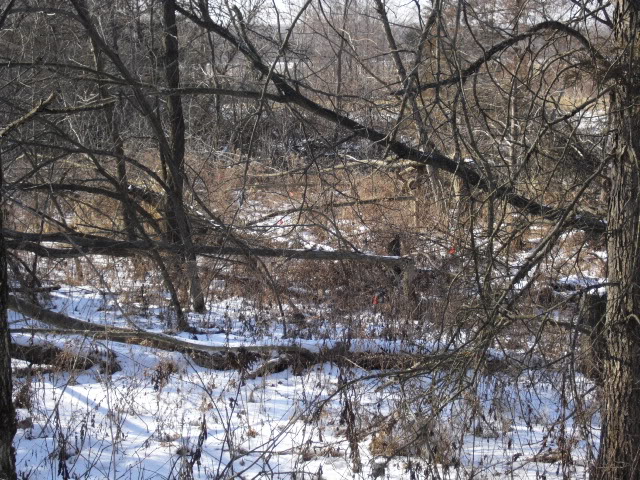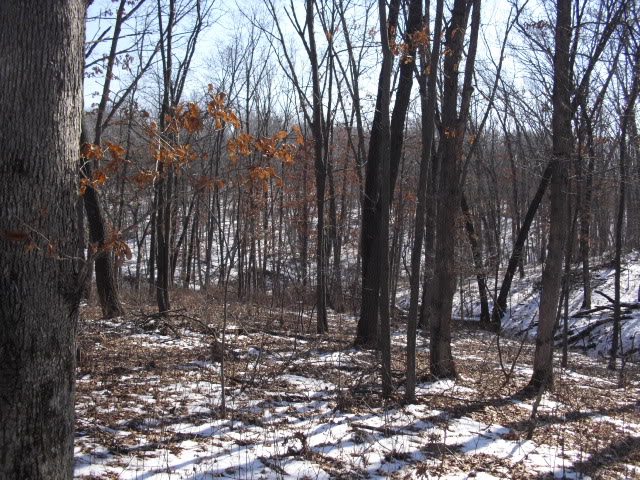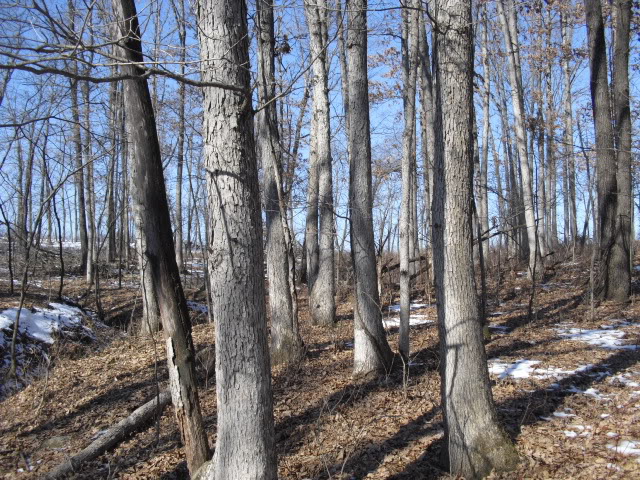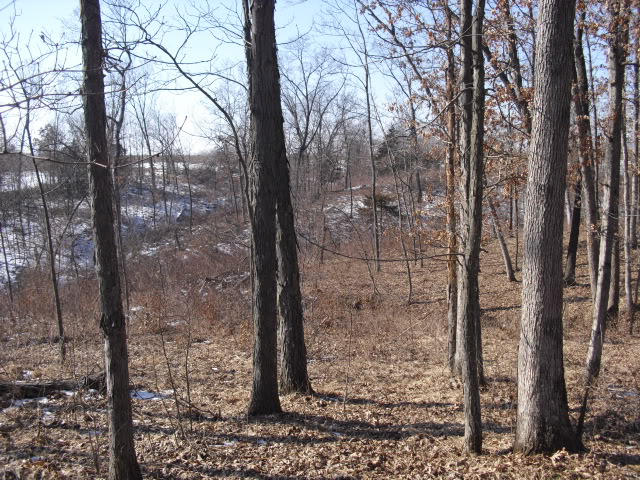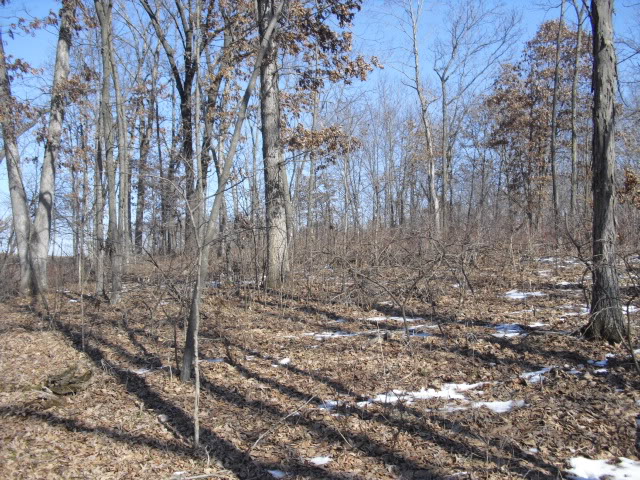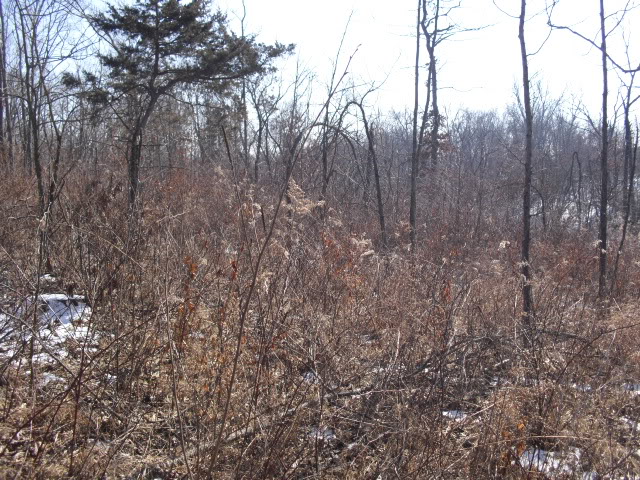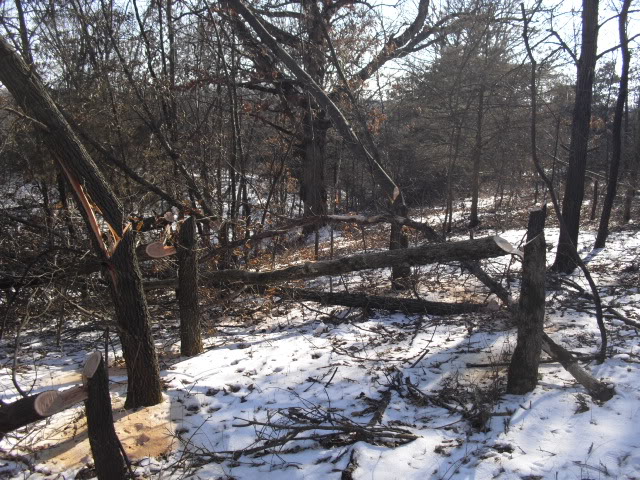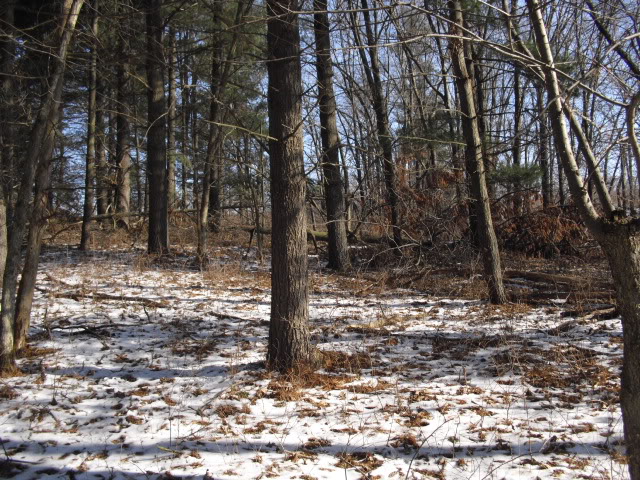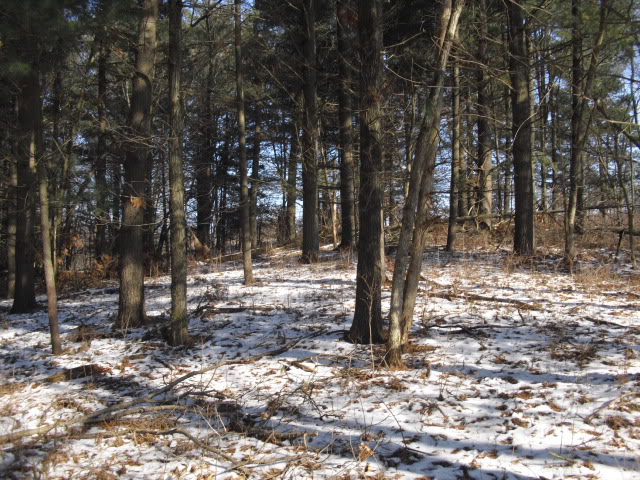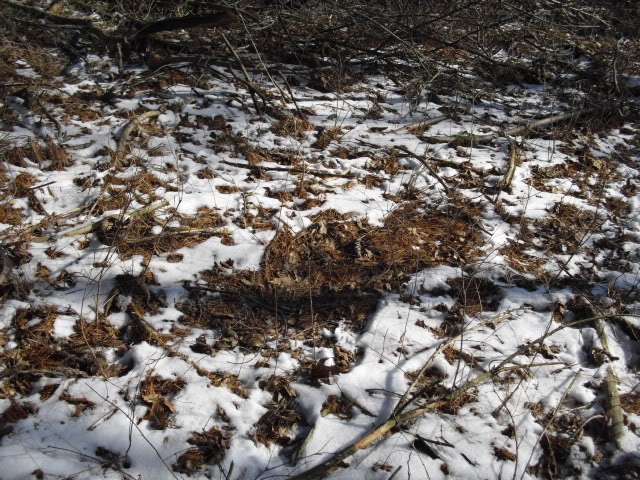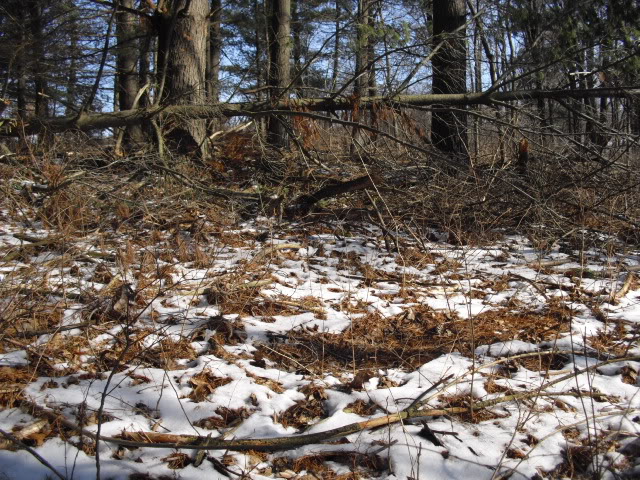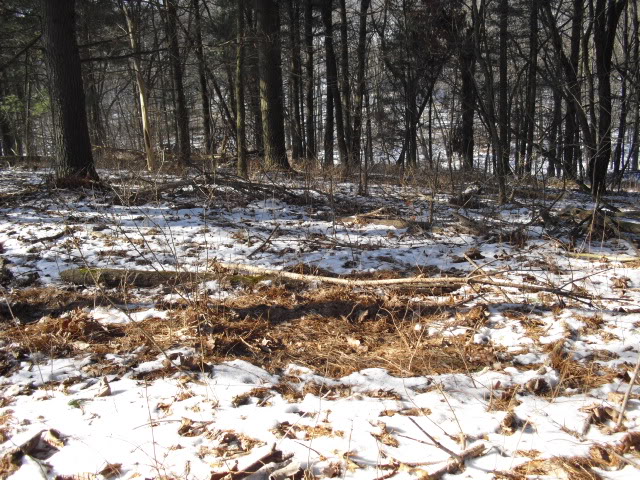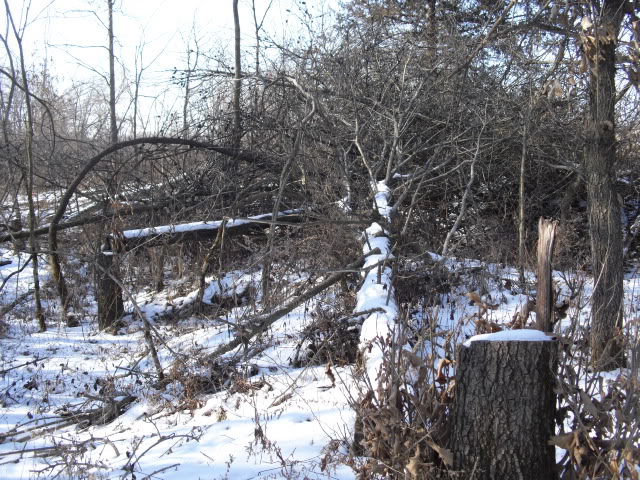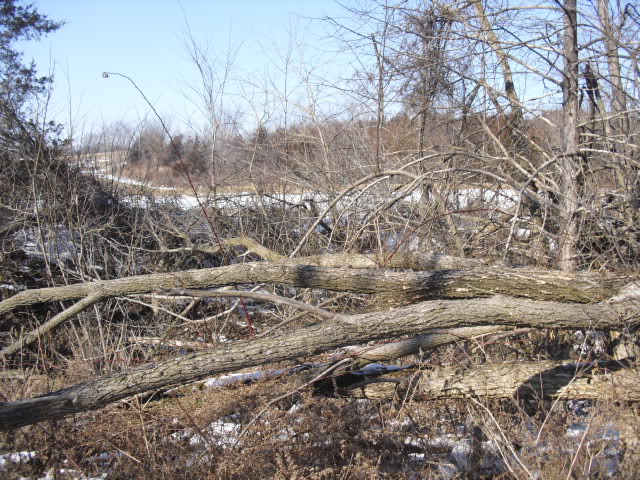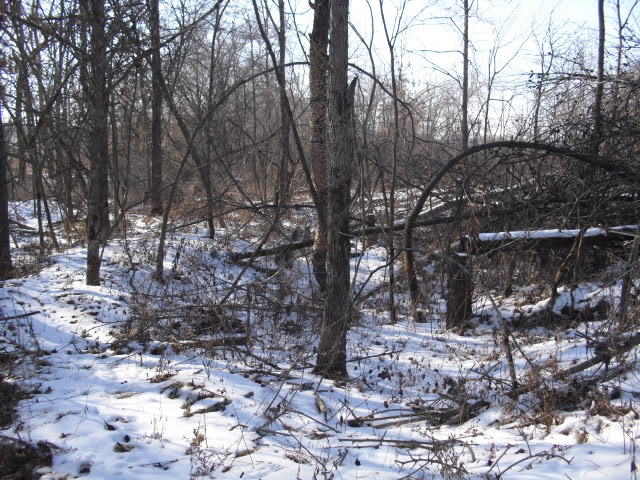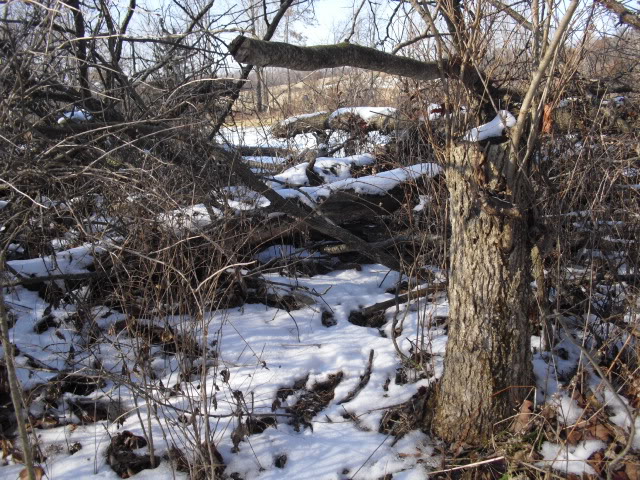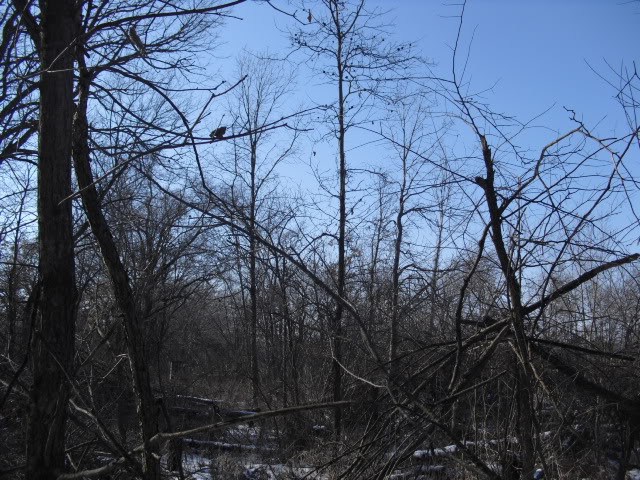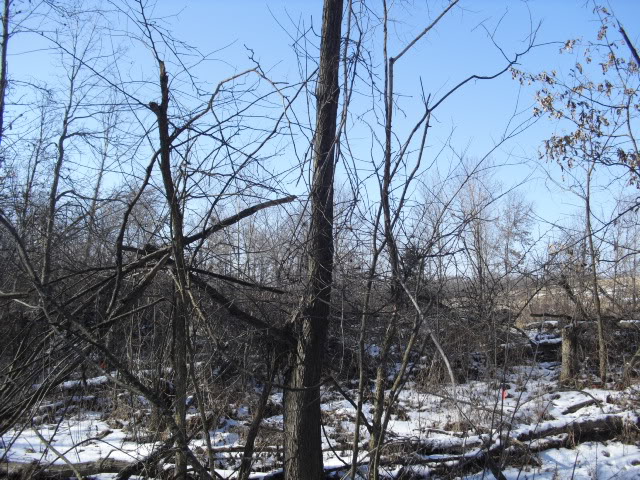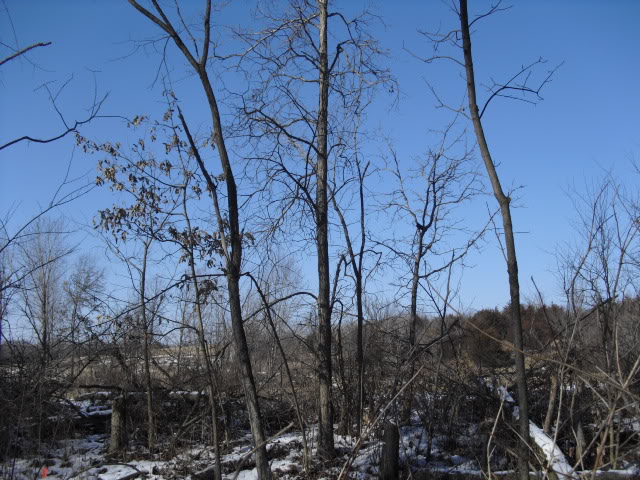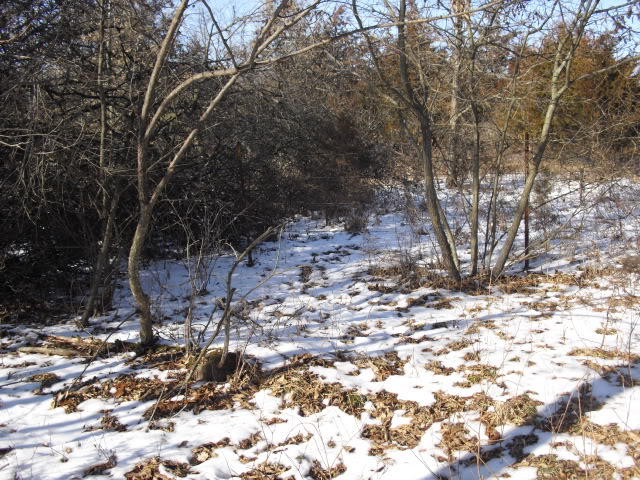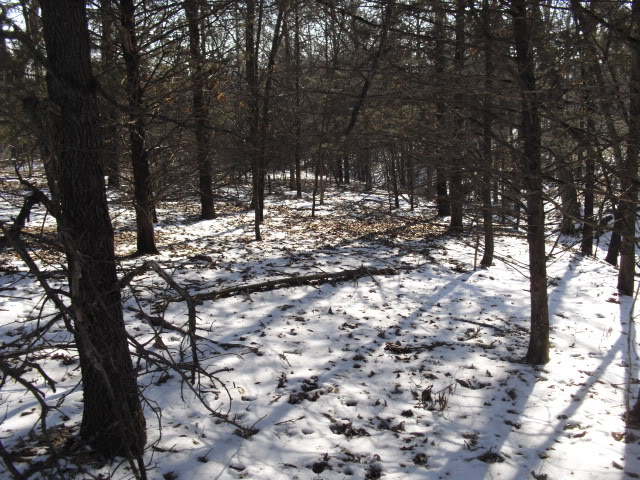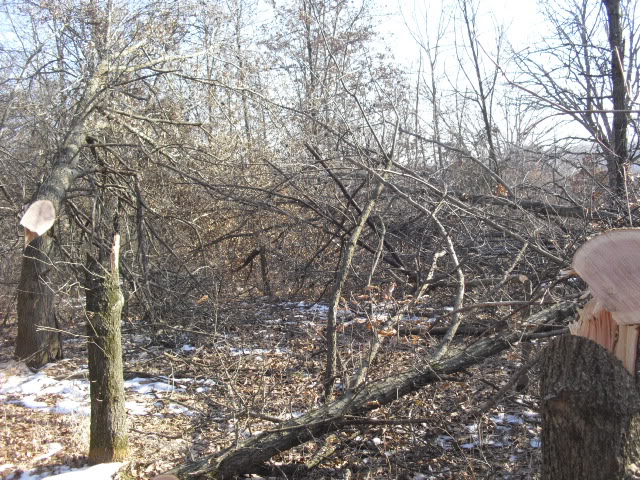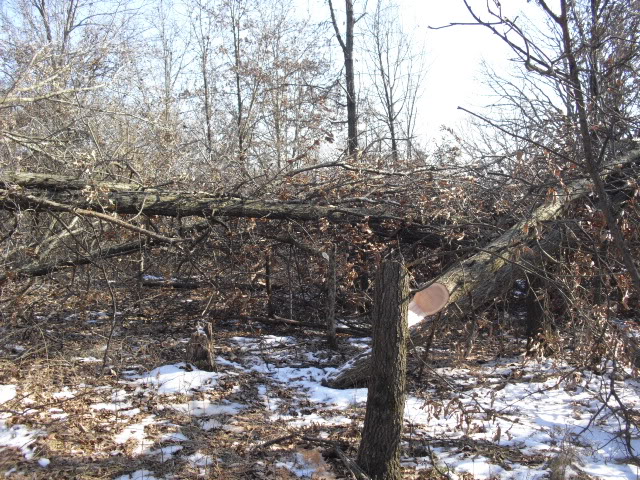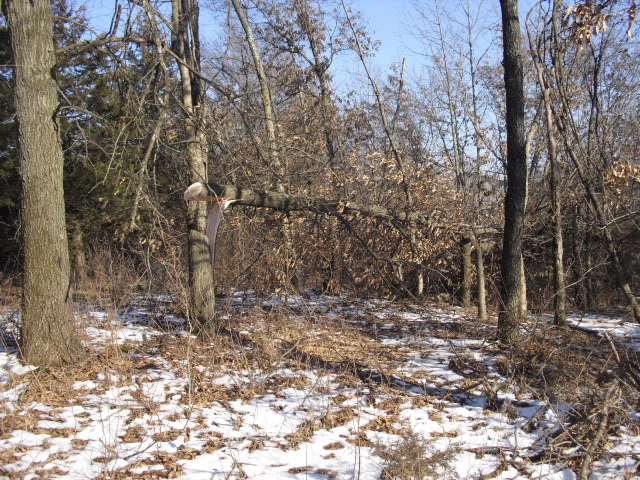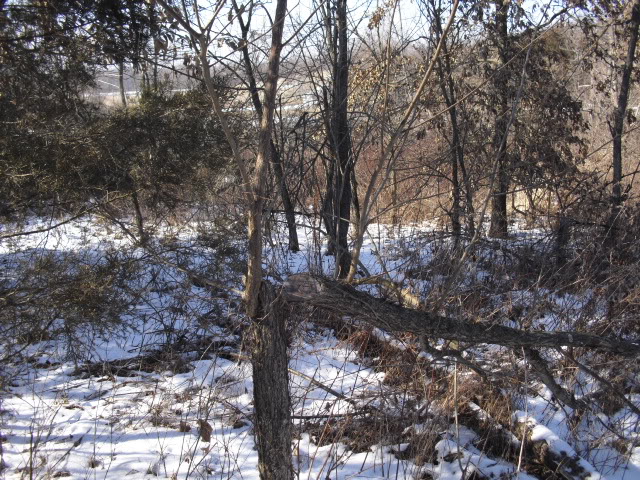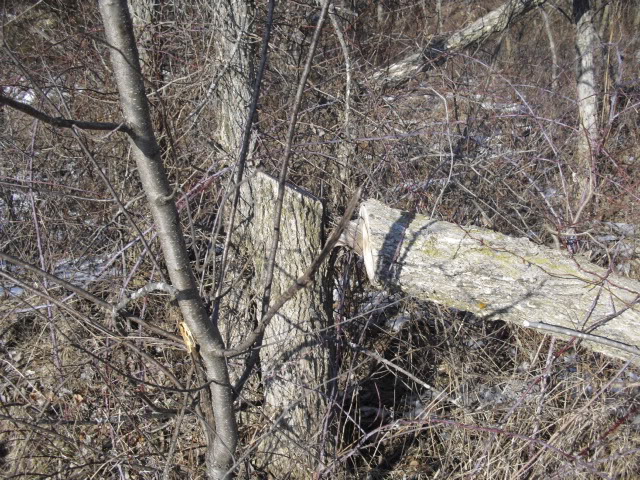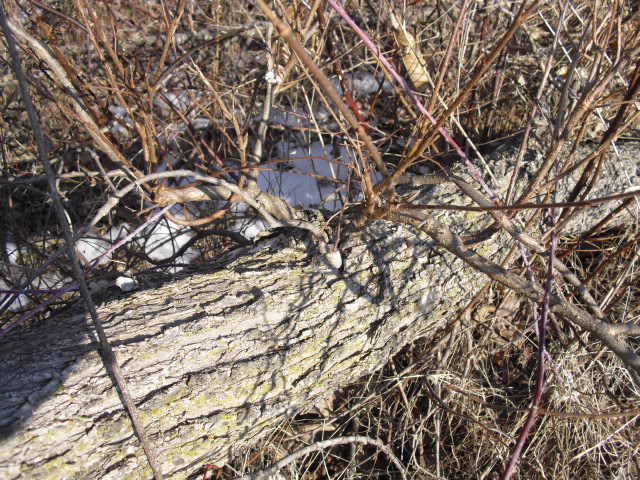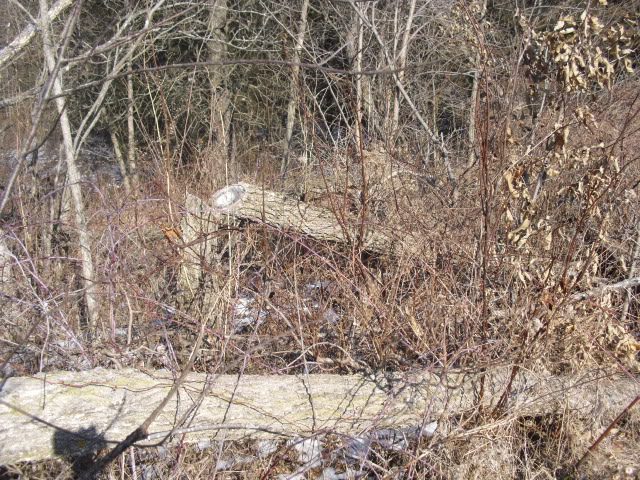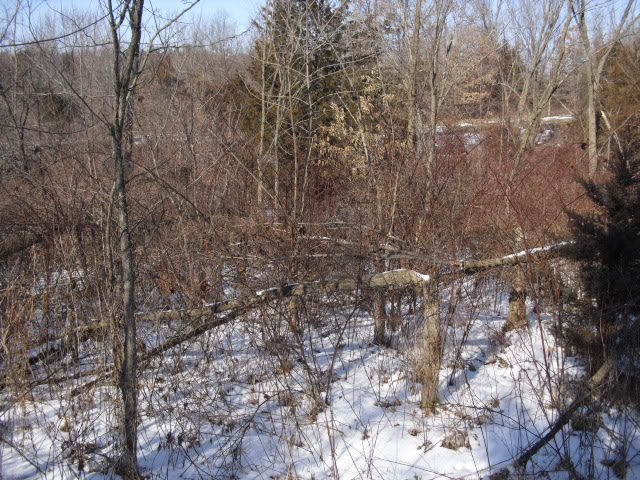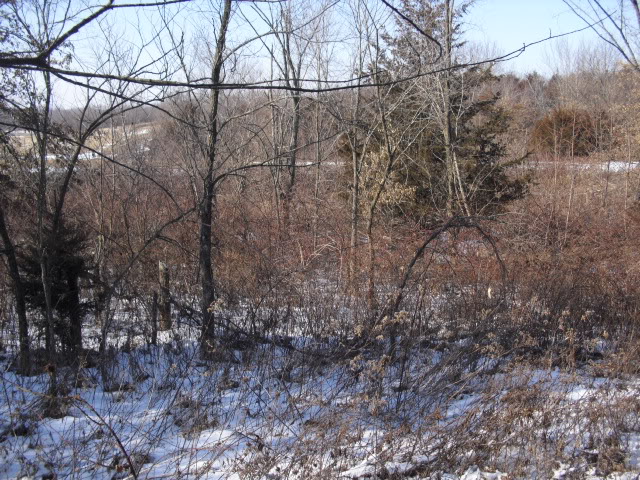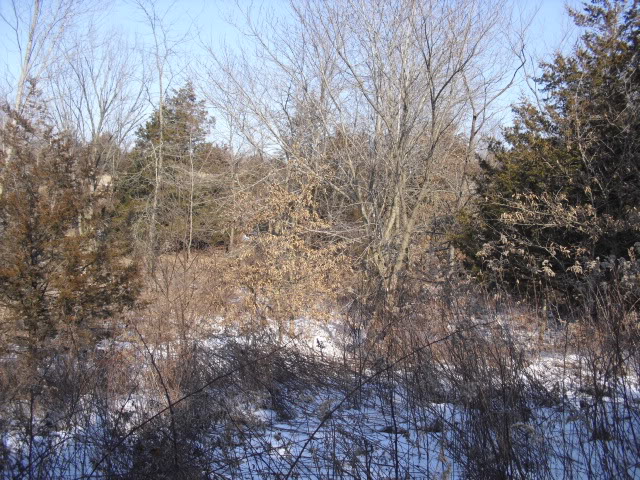dbltree
Super Moderator
The term "hinge cut" refers to cutting partially through a small tree so that it can be tipped over but yet remain alive. Doing so can create hiding places where deer will bed, feeding places via browse from the downed tree top and shoots sent up from the stump. These downed trees also can be strategically cut to funnel deer past a stand.This thread is about the practice of hinge cutting or falling trees in a variety of places to create screens, encourage new browse, create bedding areas, block off runways and funnel deer.
Before embarking on a hinging project it is imperative that you consult with your area forester and discuss what your goals are for your timber. They can help you identify cull species and discuss timber managment however they do not understand hinging nor advocate it so you will also need to do some research and goal setting of your own
Please read the TSI thread for more help in identifying cull trees and understanding timber management.
The following proffesionals are people I frequently consult regarding anything to do with my timber so some advice given is based on their experience and advice having walked my farms with me.
<table style="border-collapse: collapse;" class="MsoNormalTable" border="0" cellpadding="0" cellspacing="0"><tbody><tr style=""><td style="border: medium none rgb(236, 233, 216); padding: 2.25pt 0.75pt 0.75pt 9pt; background-color: transparent;" valign="top">Ray Lehn District Forester ray.lehn@dnr.iowa.govAaron Lumley, forestry supervisor for the Iowa DNR aaron.lumley@dnr.iowa.gov
</td></tr><tr style=""><td style="border: medium none rgb(236, 233, 216); padding: 2.25pt 0.75pt 0.75pt 9pt; background-color: transparent;" valign="top">
</td></tr><tr style="height: 9pt;"><td style="border: medium none rgb(236, 233, 216); padding: 0.75pt; background-color: transparent; height: 9pt;">
</td></tr></tbody></table>
<o></o>
Paul Tauke, Bureau Chief and State Forester paul.tauke@dnr.iowa.gov
<o></o>
Gregg Pattison
USFWS - Iowa Private Lands Office Gregg_Pattison@fws.gov
Cost share options
Iowa only....REAP Practices must be approved by IDNR Forester and paid once inspected by the IDNR Forester and bill submitted.
TSI - Timber Stand Improvement 5 acre minimum - allowed $160 an acre X 75% =$120
Tree Planting - 3 acre minimum $600 allowed per acre X 75% = $450
Tree Planting/Weed Tree Removal - $160/$600 x 75% (weed tree removal may be less acres then total planted)
Federal Programs...these two have identical practices but EQIP practices allowed are different by county/state while WHIP is nationwide.
Environmental Quality Incentives Program (EQIP)
Wildlife Habitat Incentive Program (WHIP)
Check by State
The following is just a brief list of a few of the options available...check this link for the complete list and the payment rates.
2011 Iowa EQIP Practices and Payments
314 Brush Management (weed tree removal)
647 Early Successional Habitat Development/Management (Timber Edge Feathering)
490 Forest Site Preparation
666 Forest Stand Improvement (TSI or Weed Tree removal)
422 Hedgerow Planting
338 Prescribed Burning
391 Riparian Forest Buffer
612 Tree and Shrub Establishment
380 Windbreak or Shelterbelt Establishment
In all cases either the forester or NRCS Tech will need to inspect the finished practice before the operator/landowner can be paid. Usually a simple bill will suffice (10 acres TSI X $160 for example) but in some cases they will want an itemized (seedlings, herbicides, fuel, labor etc) that add up to the total cost share.
The federal programs are not cost share, just a payment per acre so slightly different then the state programs.
Talk with NRCS and your local forester/private land biologist for more details but even they get confused, so look over the links and be informed yourself!
This is an example of a hinge cut tree
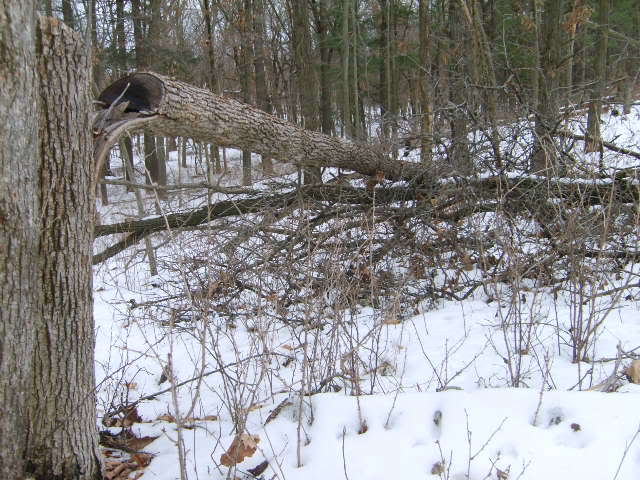
Smaller trees generally are most conducive to hinging and some tree species more then others but attempting to hinge larger trees can be dangerous and it usually best to just tip them over leaving a 2-3 foot stump. Threes should be cut at this height to keep the tree off the ground to provide cover for bedded deer and other wildlife.
I would caution landowners to first contact your local forester, put together a Forest Stewardship program, and initiate a Timber Stand Improvement program first. Once crop trees are identified and marked (these will generally be white and red oak species) then cull trees can be girdled or tipped over via hinging without worry of killing valuable trees.
Bedding
Creating safe secure bedding for whitetails involves hinging a large area of trees (if possible) where deer and more importantly, mature whitetail bucks will bed safety and solitude. This does not involve creating one bed but I whole area where "bigger is better" is applicable.
Hinging trees often leaves an area looking like a tornado went through it and depending on the soil type will eventually grow back thick and wild. Some soils will take longer to respond with new growth in which case adding some fertilizer and pel lime can help encourage browse and cover.
Birds tend to roost in brushy downed tops and in turn drop seeds that sprout new blackberries and grapevines to add to the tanglement and help diversify wildlife cover in general.
These are hickory hinge cuttings on a ridge where re-growth has been slow
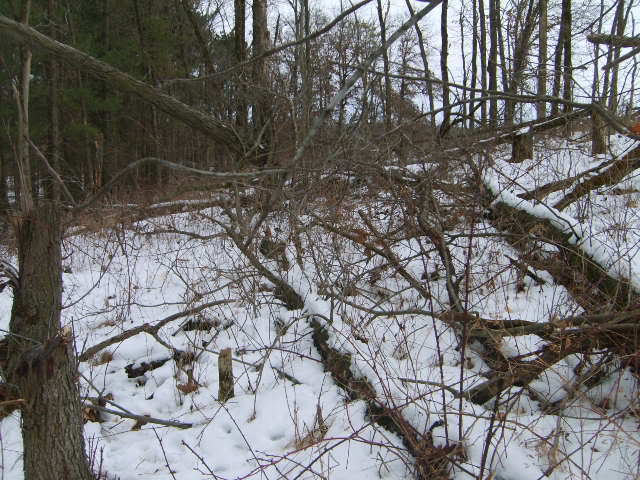
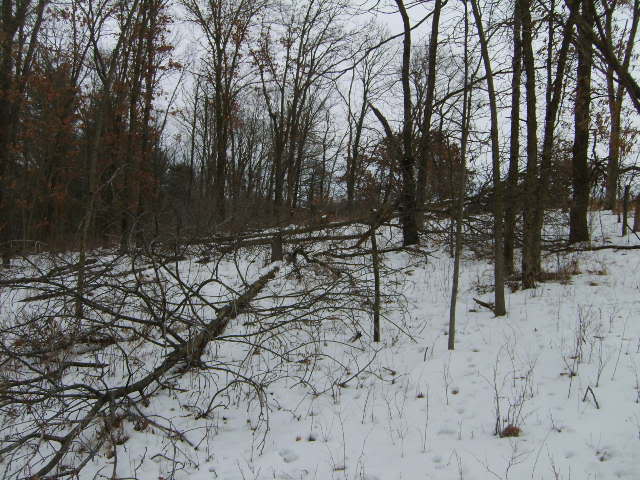
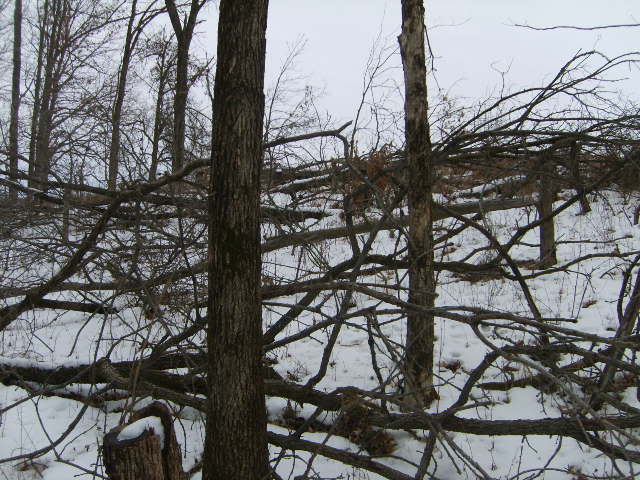

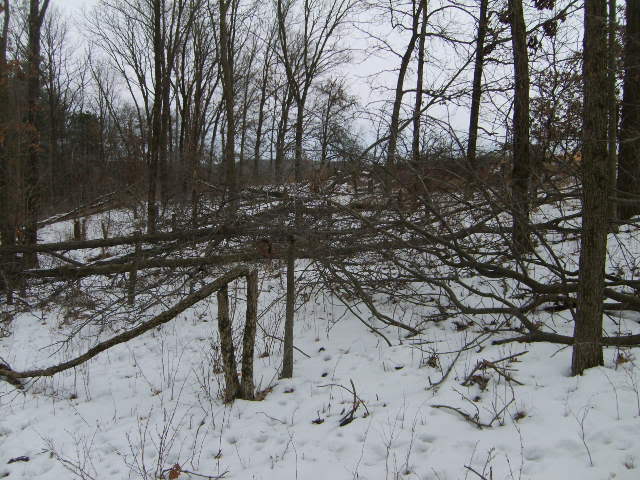
Deer immediately responded to the cover the tops provided and began to bed in it within days after cutting
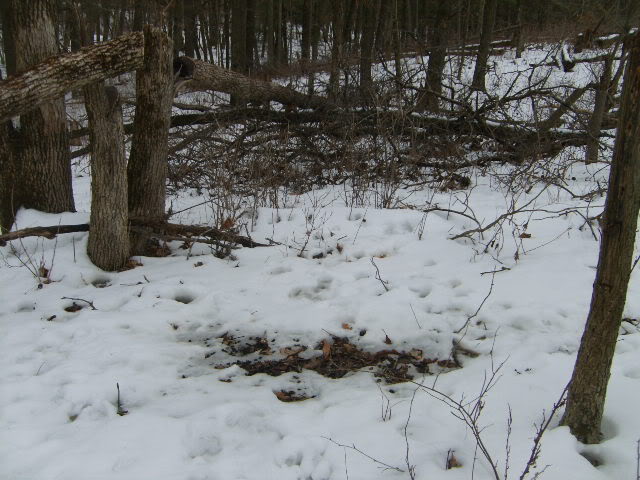
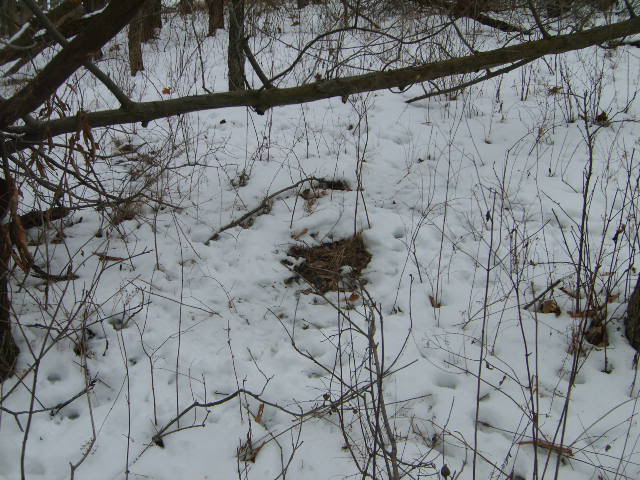
The area was full of tracks as deer fed on the downed tops
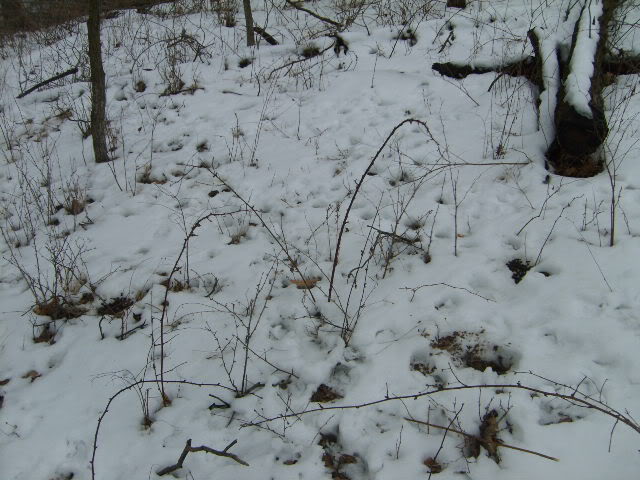
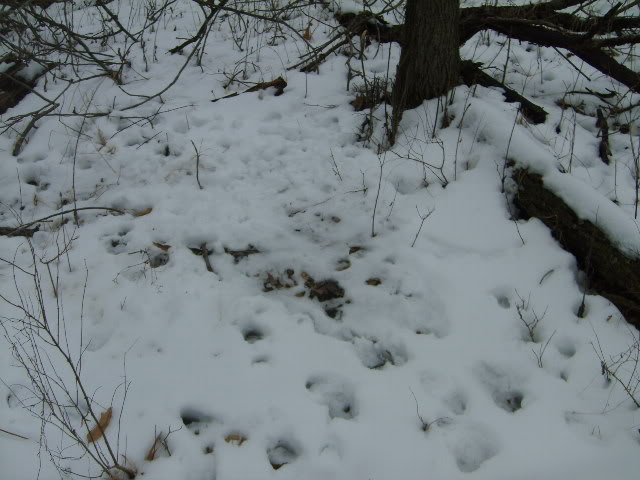
Note that deer prefer to be on a ridge or slope where they can lay behind the hinge trees and see danger from below and escape over the ridge
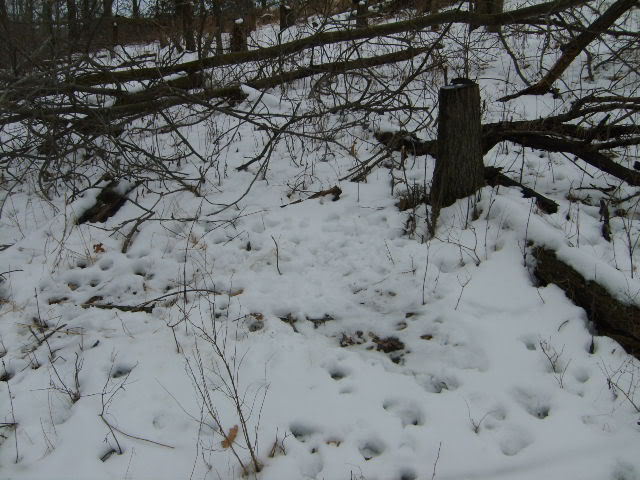
They also love south facing slopes with conifers as a backdrop and hinging trees around those areas is also helpful
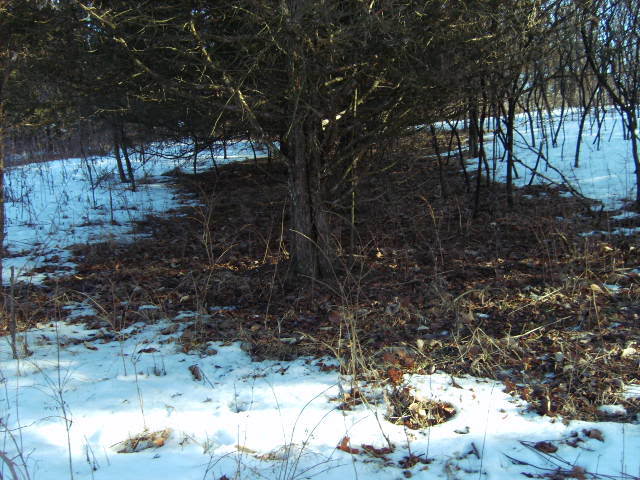
So use care to not damage young conifers or even plant them in the tree tops for additional thermal cover and screening
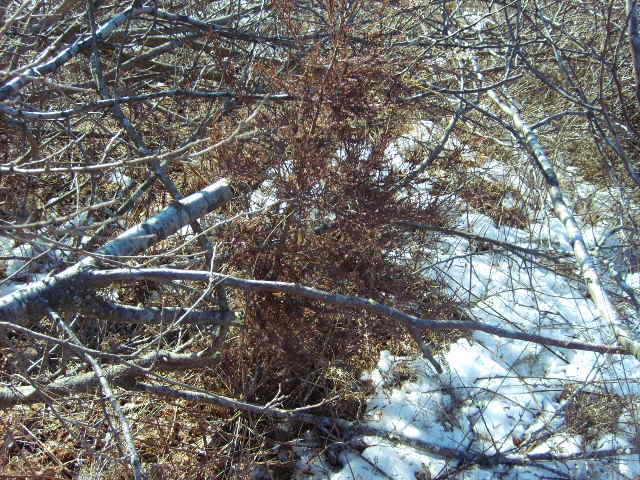
Most timber tends to look open or park like which tends to be pleasing to the eye of the landowner but it is the opposite to whitetails seeking safe secure bedding.
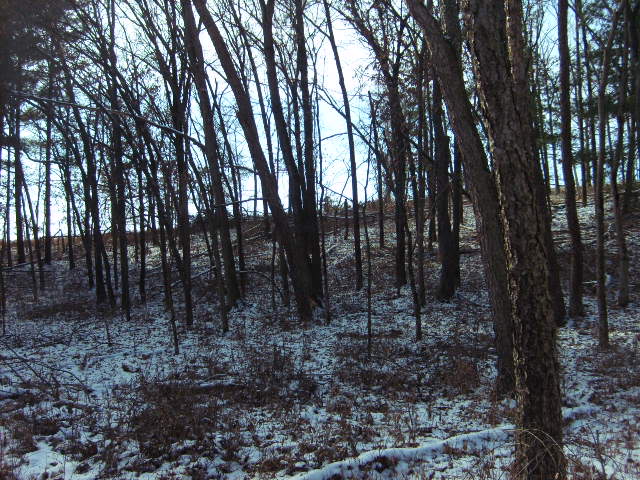
Using care to leave good mast producing trees one can dramatically increase cover by hinging and girdling trees to allow sunlight to the forest floor.
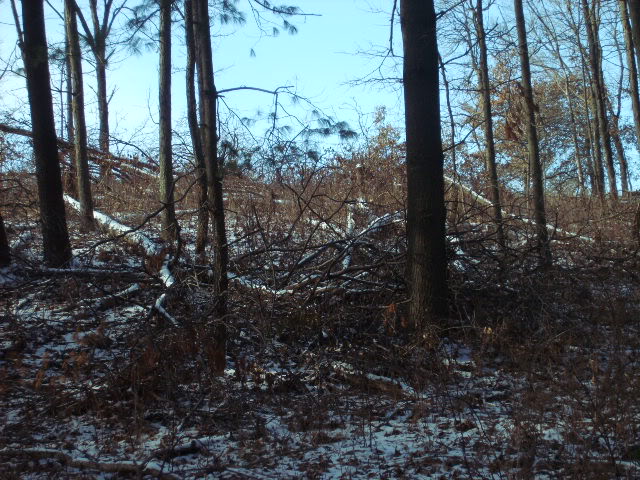

Larger trees often break off rather then hinge but they must be tipped over to open up the canopy and by cutting them high on the stump, create more cover.

Observing the natural bedding habits of deer is a great way to learn what they like and how to improve your habitat. Late winter is a great time to go for a walk and notice natural beds and then get down on their level to see why they chose that spot.
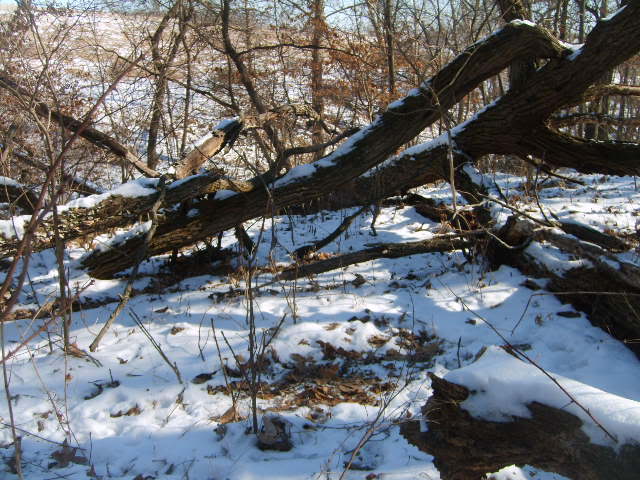
These natural fallen tops provide some clues

Deer lay behind them and are able to see approaching danger yet use them as cover should the need to flee arise
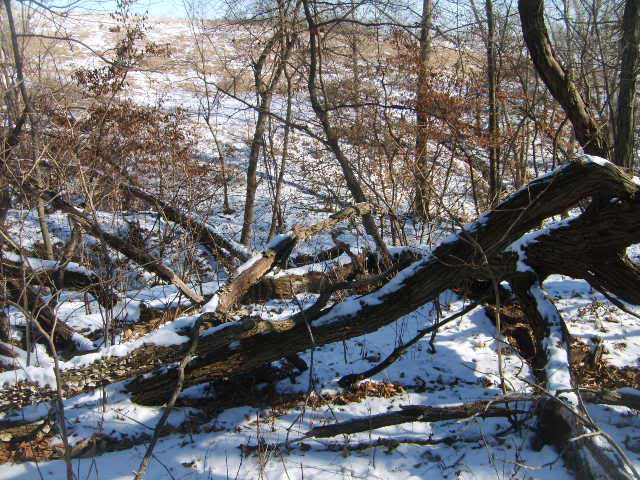
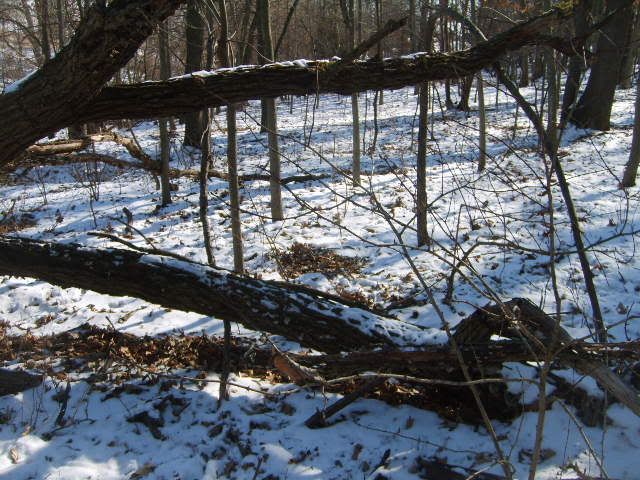
Every landowner may have different species to work with, but for me it is often shagbark hickories that have little to offer for whitetail habitat
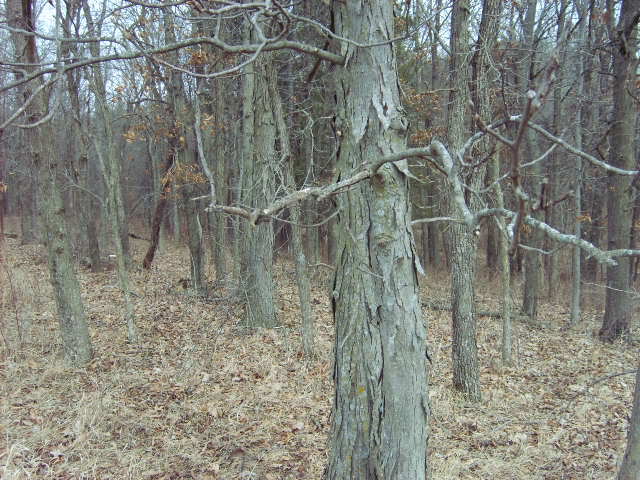
Tipping them over helps create bedding and browse and allows shade intolerant oak seedlings to emerge
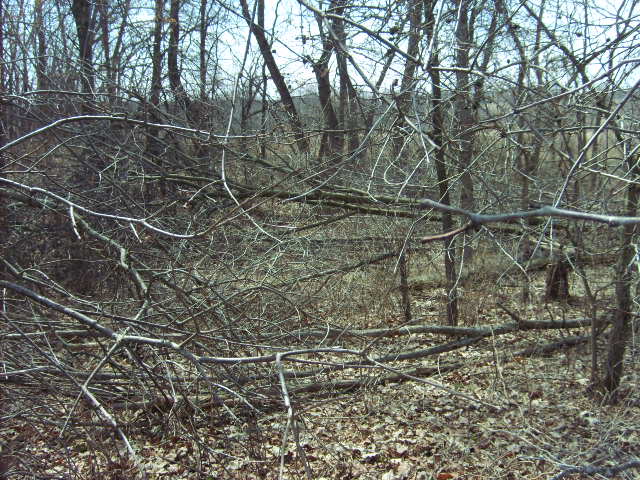
Browse
Many landowners spend an inordinate amount of time on foodplots while ignoring the fact that whitetails are browsers and must have natural browse available at all times. Hinging is a a great way to provide browse and bedding at the same time.
Browse comes in two forms...first from the hinged tree itself and secondly from the new shoots and forage that springs up once sunlight is allowed in. Blackberries are a preferred source of browse and they almost immediately spring up when sunlight reaches the soil.
These are pictures of hinge cuttings that are 4 years old and have grown up to blackberries and other new growth in a low area
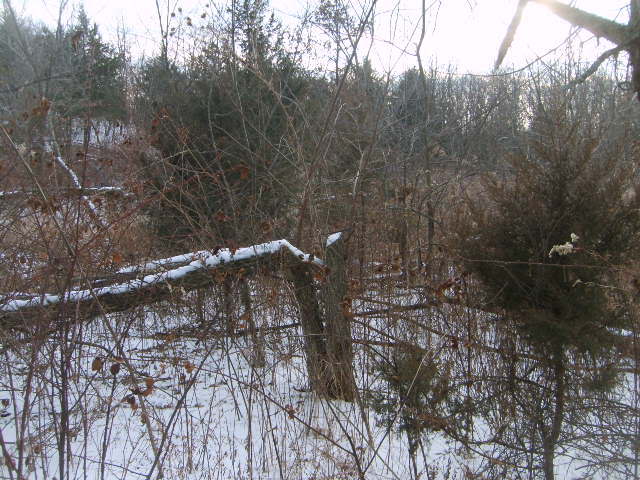
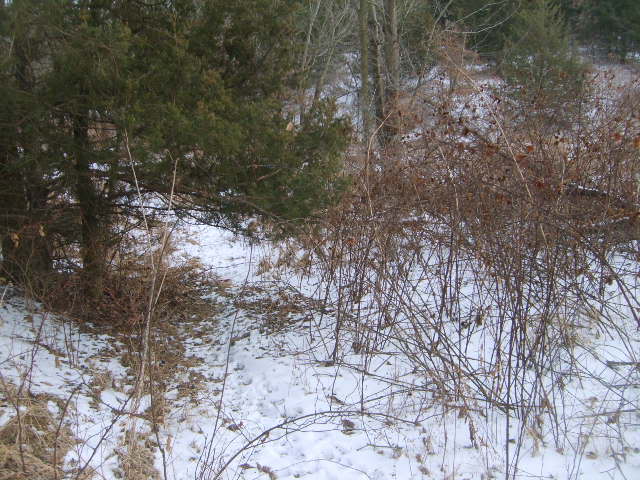

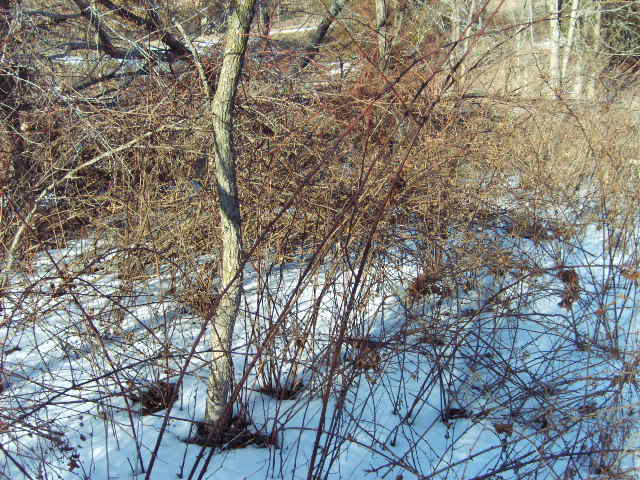
In summer months, those areas look like this!
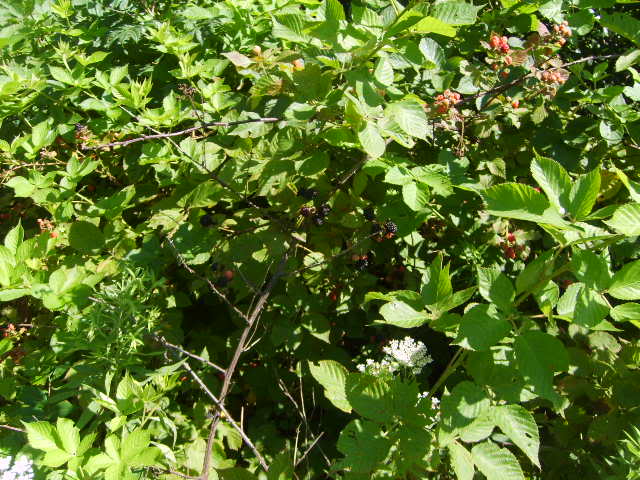
Note the shoots sprouting from these stumps while the tree itself also remains alive
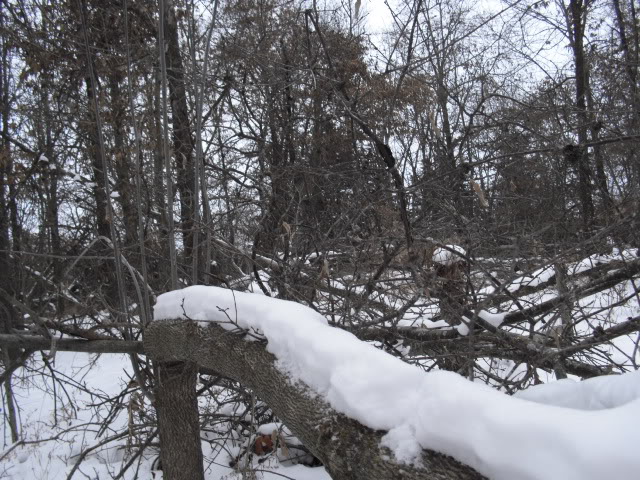
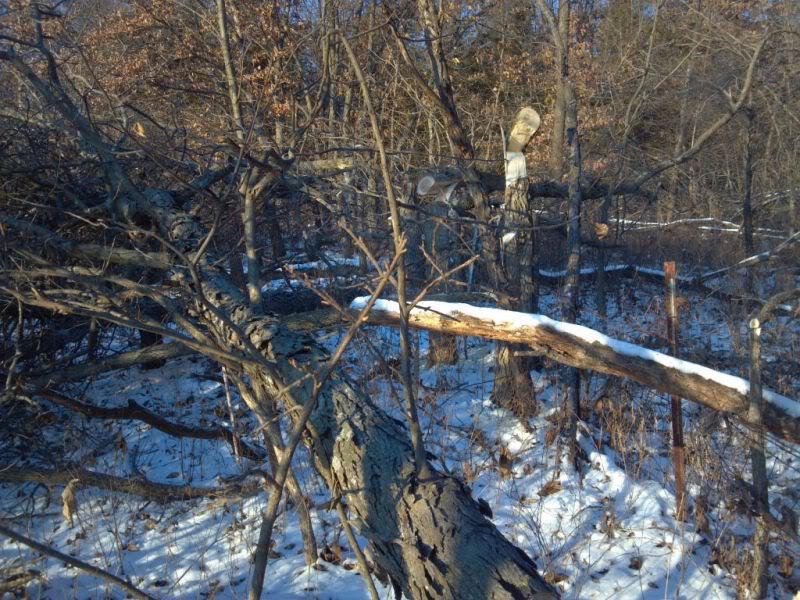
Thick cover and browse summer
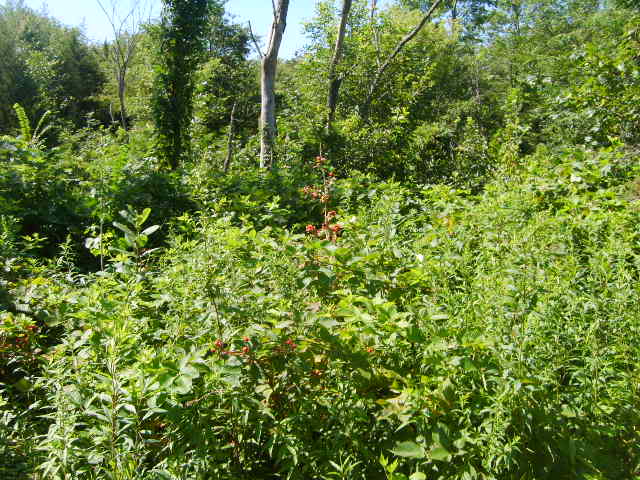
and winter

The tender sprouts that shoot up from cut stumps provide a source of food and thick cover
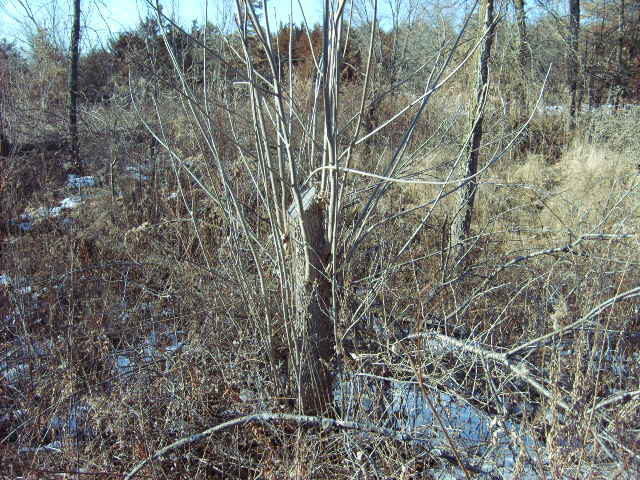
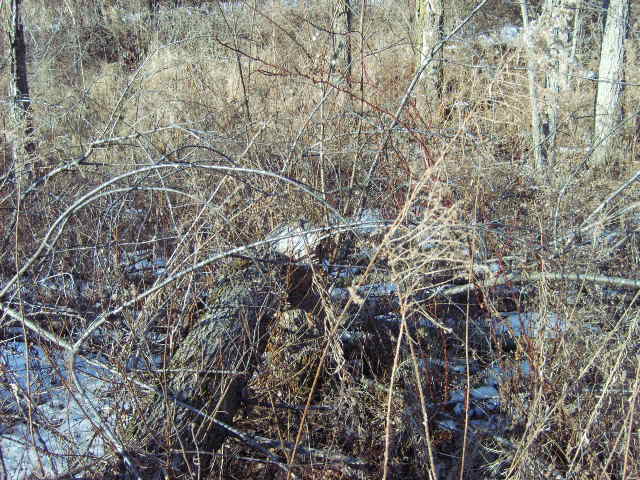

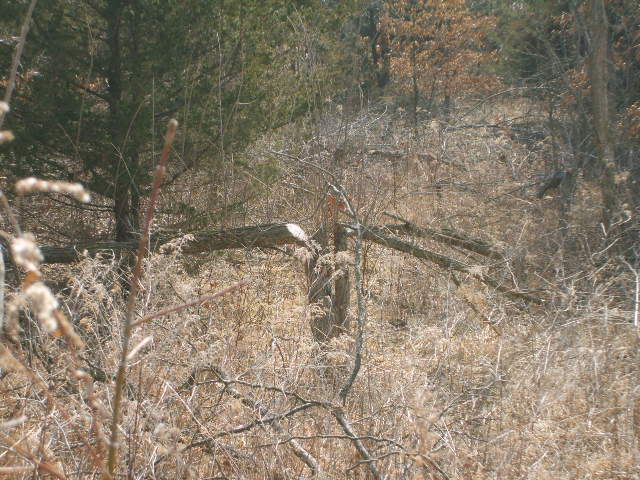
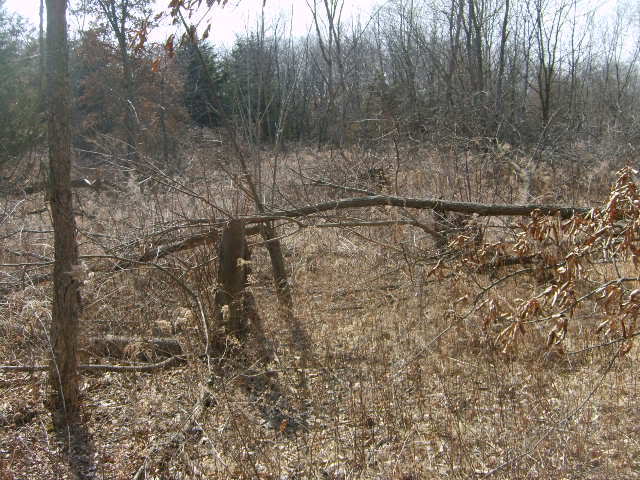
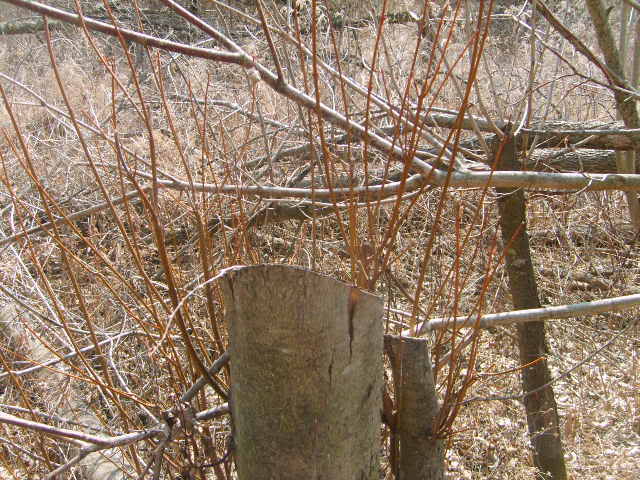
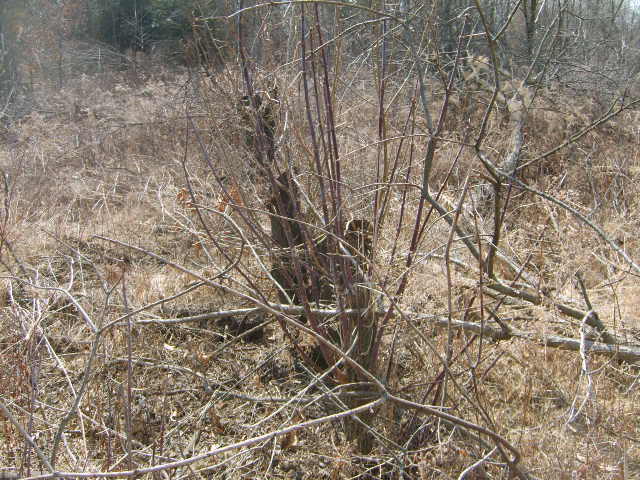
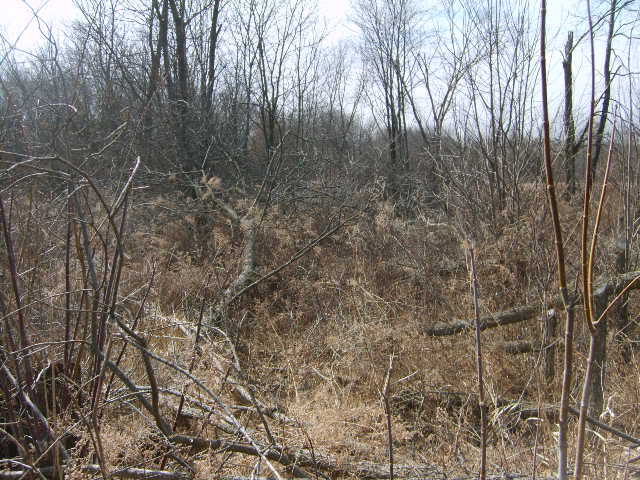
Some species such as this honey locust tend to die when hinged but the thorny mass does provide cover
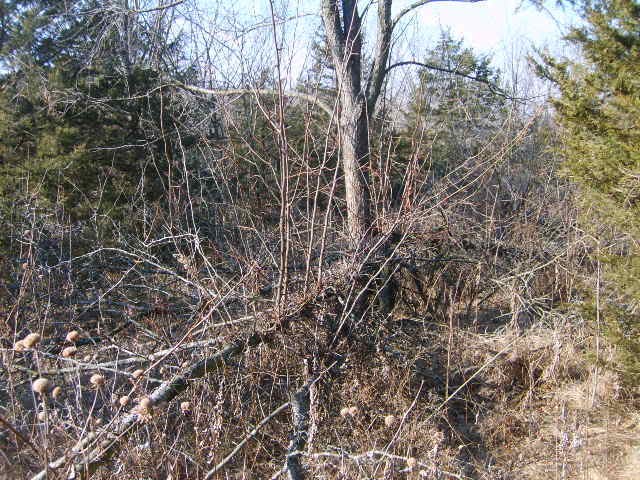
Others such as this shingle oak are more inclined to remain alive and though not a valuable food source do provide dense bedding cover, as the leaves tend to remain on all winter.

The following is a list of deer browse in order of importance or preference from this link:
Winter Deer Foods
More links to favored deer browsePreferred or Best Liked
Cedar, white or arborvitae Yew Apple
Sassafras Mountain maple Maples*
Wintergreen Witch hobble Flowering dogwood
Alternate leaved dogwood Basswood Staghorn sumac
Second Choice
Elderberry Red berried elder Mountain ash
Highbush cranberry Highbush blueberry Willow*
Silky dogwood Red osier dogwood Honeysuckle
Nannyberry Cucumber tree Hemlock
Wild raisin Arbutus
Readily Eaten
White ash Sugar maple Oaks*
Black birch Yellow birch Hickory
American chestnut Black cherry Witch hazel
Spicebush Choke cherry Elm
Black walnut Shadbush, Winterberry Lowbush blueberry
Butternut Black ash Hazelnut
Wild grape Bush honeysuckle Leatherwood
Starvation or Poor Food
Scotch pine** Pitch pine** White pine**
Red pine** Beech Aspen or poplar
Mountain laurel** Rhododendron** Gray birch
Paper birch Musclewood (Blue beech) Ironwood (Hop hornbeam)
Spruces Alder Black locust
Grey-stemmed dogwood Red cedar Balsam**
Raspberry and blackberry Sweet fern Pin cherry
Sheep laurel Tamarack Gooseberry (current)*
Buckthorn Hawthorn
*There is considerable difference in palatability and preference of the different species of this genus.
**This species is often browsed heavily enough to appear to be second choice food in areas where winter food is inadequate.
MO Deer Browse
Cutting Browse for Deer Feeding
Openings allow all kinds of new lush thick growth to come up such as this elderberry bush

Plants like this are often referred to as soft mast
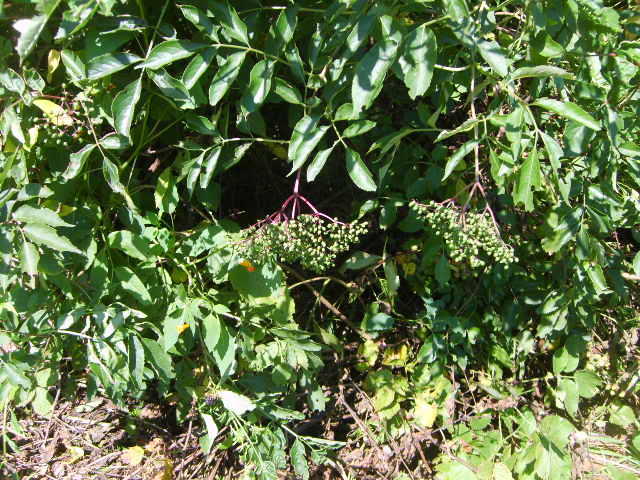
and creating openings creates a whole new world of cover and feed

Edge feathering is often used to provide screening, browse and funneling affects and is simply a matter of hinging or falling non-mast producing trees along a forest edge. This creates excellent small game cover as well and is a favored method of enhancing quail habitat.
Personally I use it to help block off multiple runways entering a field and to create screening at the same time.
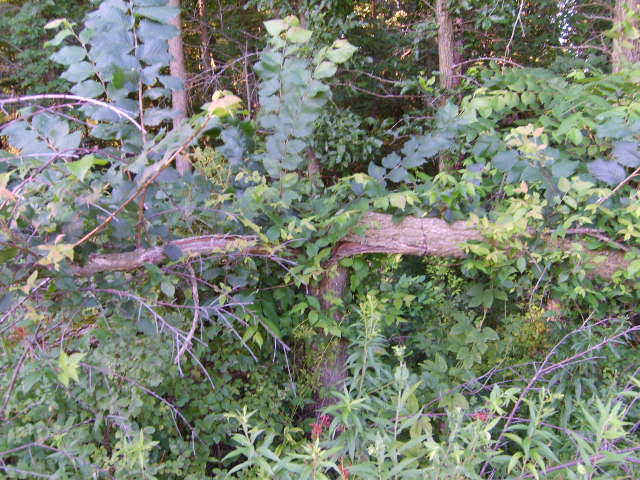
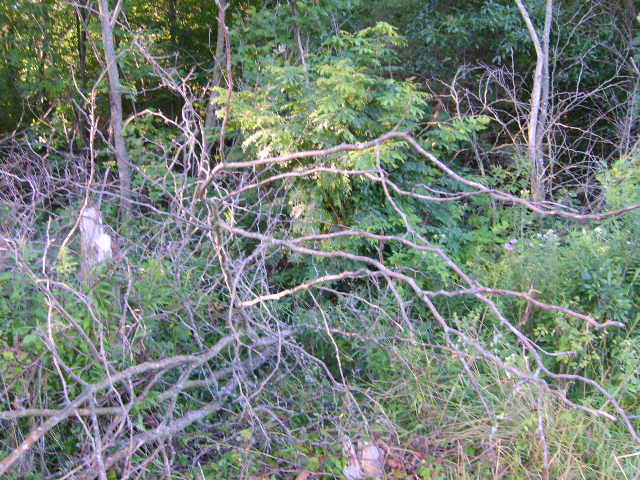
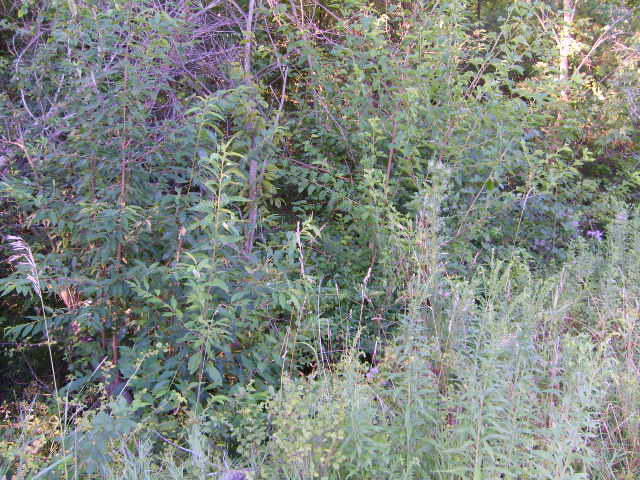

I often fall the trees into the field and then swing them around to create a blocking effect and create a giant brush pile of cover and browse.
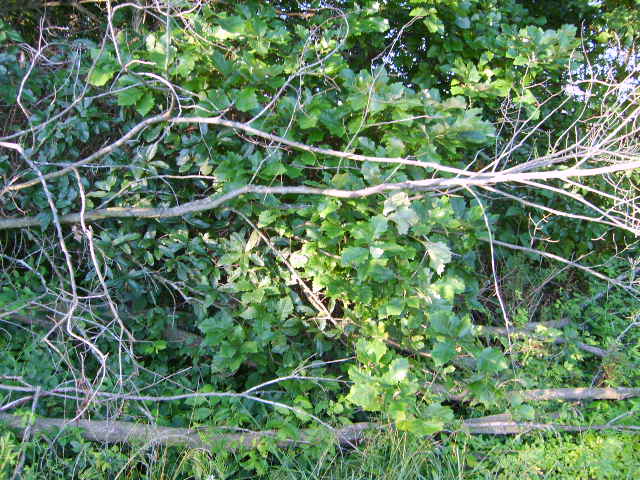
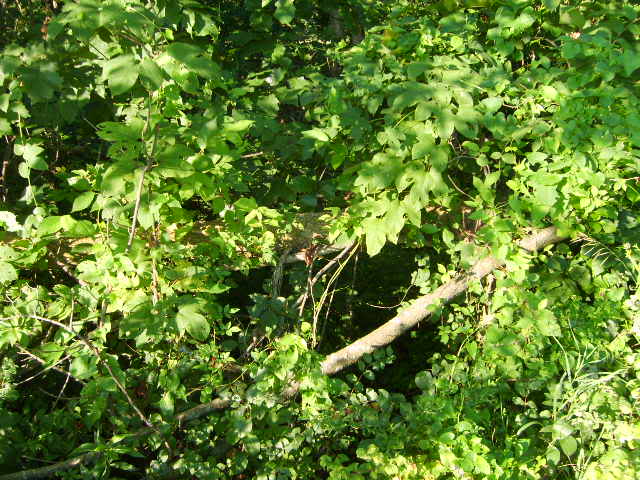
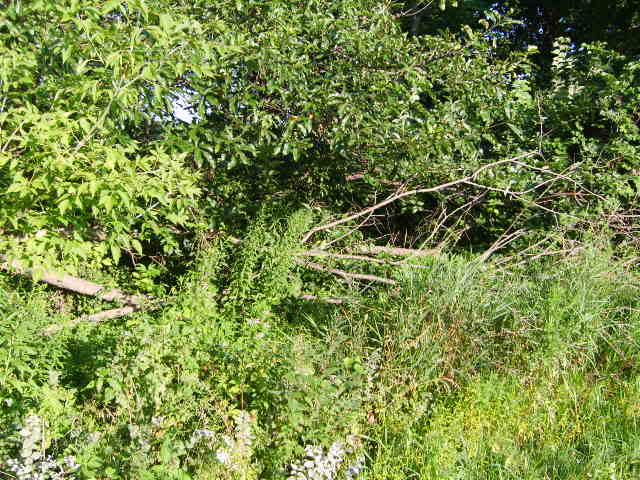
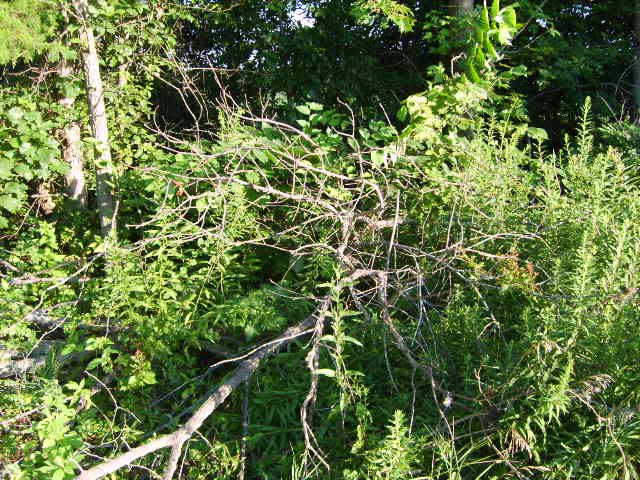
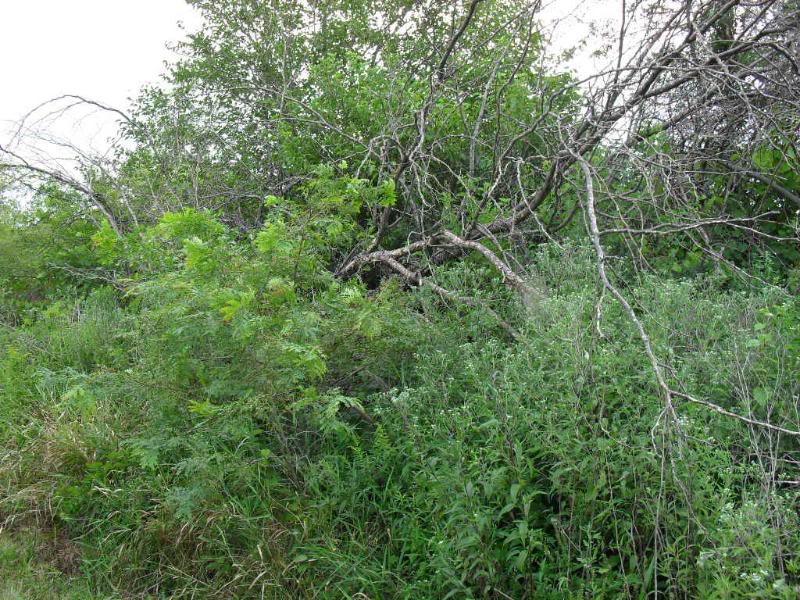
Edge feathering often brings up the subject of scrapes and I always leave a small tree with overhanging licking branch at the edge of any runways I do not block off. I do not hunt scrapes because I hunt mature animals that rarely use scrapes in daylight hours but these spots are excellent trail cam sites.
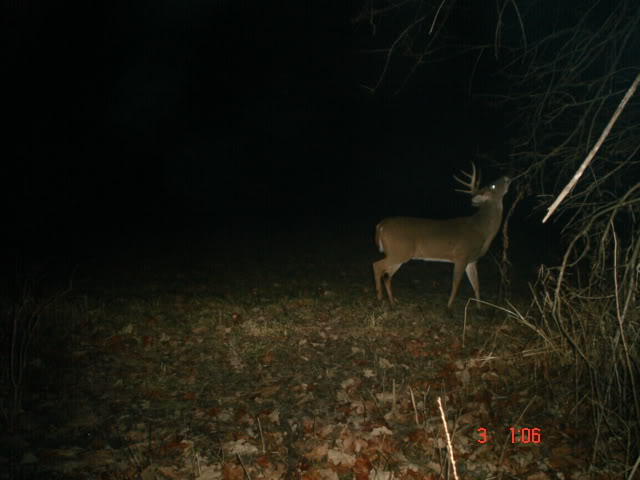
There is nothing more frustrating then seeing deer traveling multiple runways and tipping over trees along the edge is a great way to funnel them through a couple main field entrances.
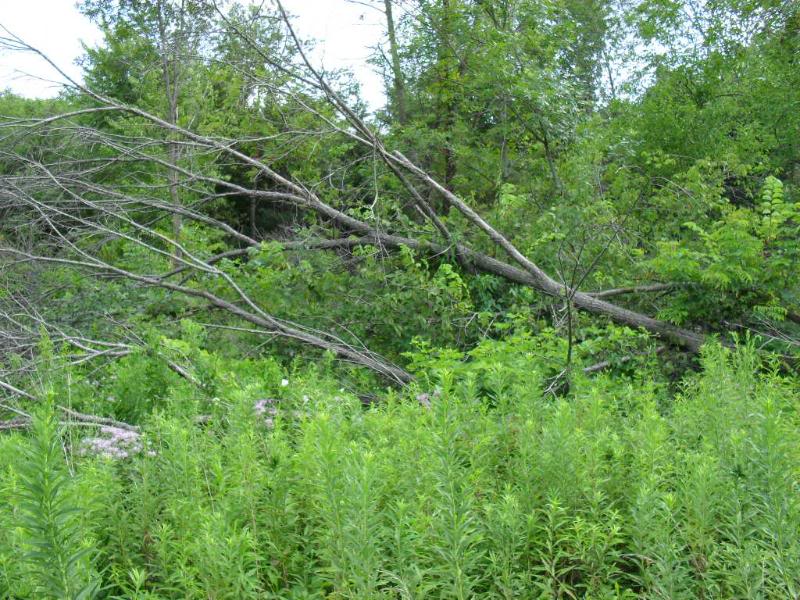
Deer will also follow these thick edges feeding on the succulent browse
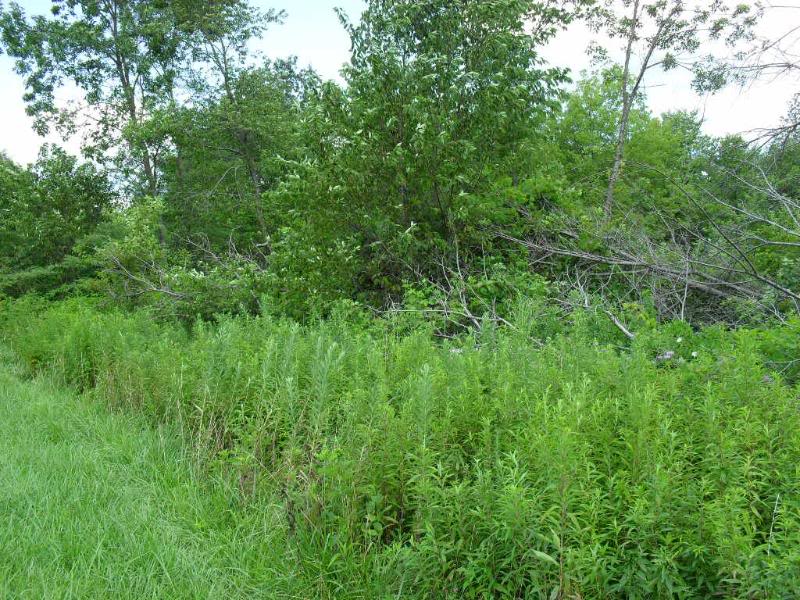
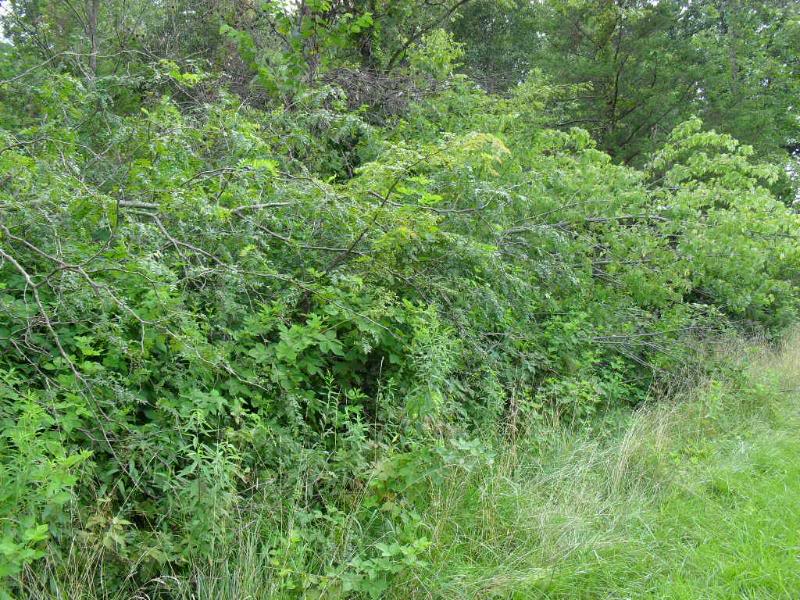

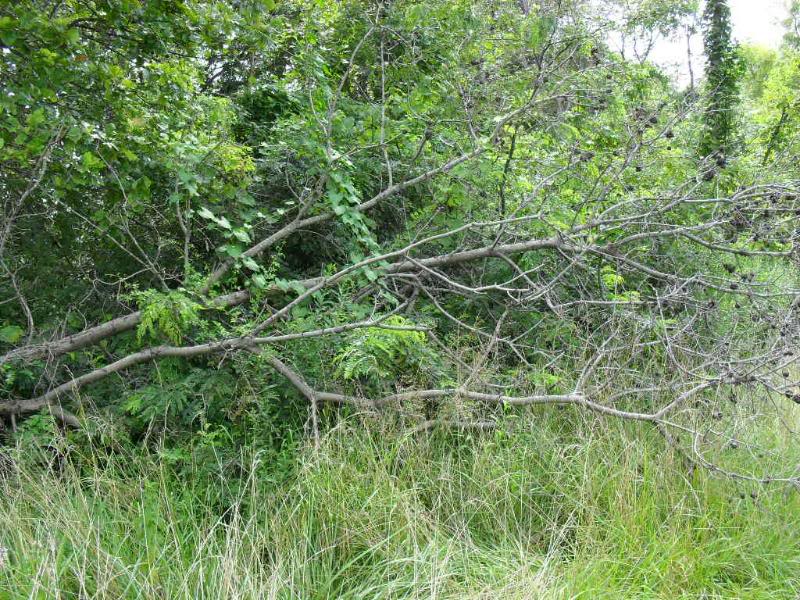
All of this also serves as a screen along the timbers edge to allow for daylight approach to a stand and provides a sense of security for bedded deer. These edges are generally to thick for bedding so no worries about deer bedding to close.
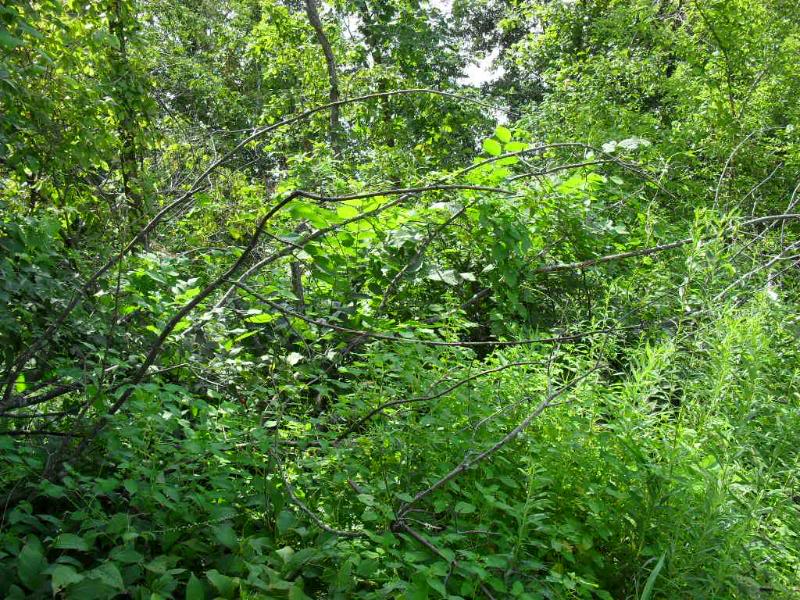
Bottlenecks
Bottlenecks and funnels are essential to consistently harvesting mature whitetails, especially with a bow. Most hunters seek out natural funnels for stand sites to increase the odds of success and landowners have the luxury of enhancing or creating bottlenecks using hinge cut trees.
As with bedding, observation is the key and this is usually accomplished while hunting key spots and observing natural travel not just by deer but mature bucks. Trail cams can help narrow down natural travel routes, which are often different for does and fawns and mature bucks.
Archers need to keep deer moving within 30 yards or less and sometimes that can be a difficult proposition during the rut when mature animals tend to cut "cross lots" in search of a hot doe.
Hinging trees parallel to natural runways and then crossways not unlike the vanes of a feather can help keep deer traveling by your stand.
Usually it amounts to making an impenetrable mess!
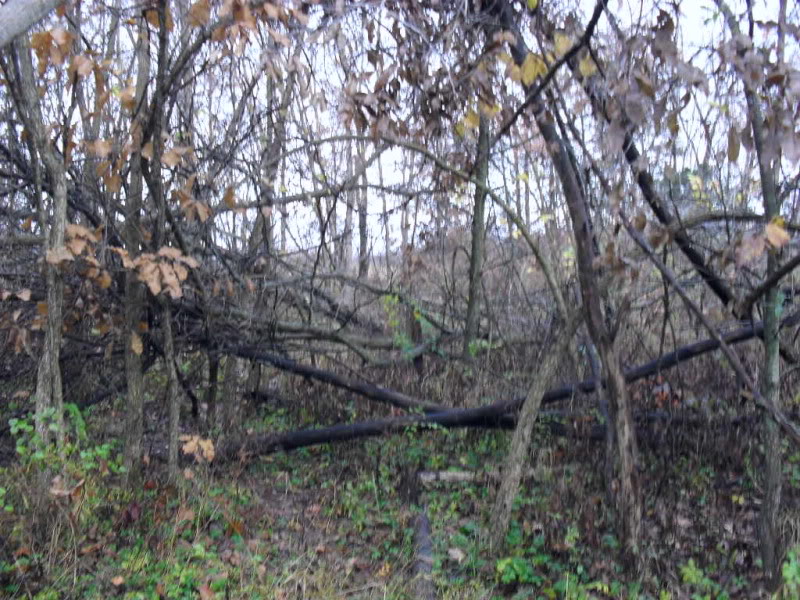
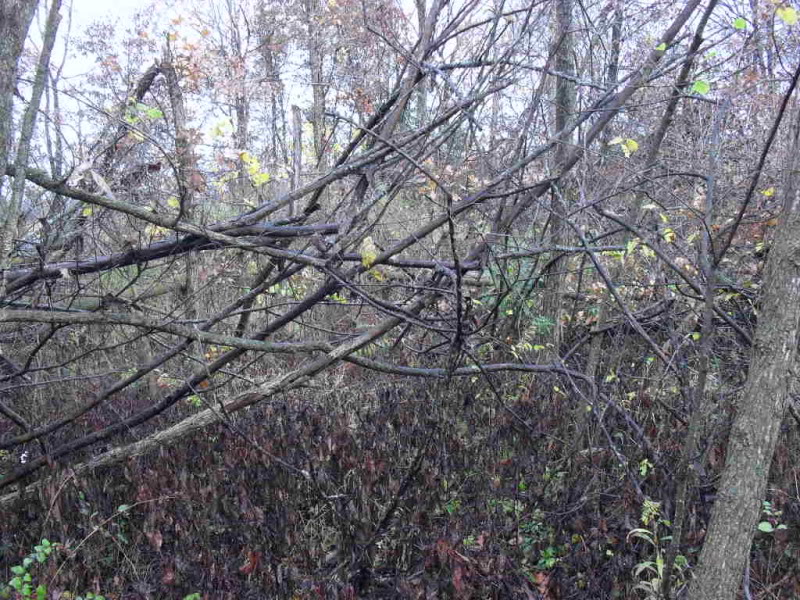
In the woods
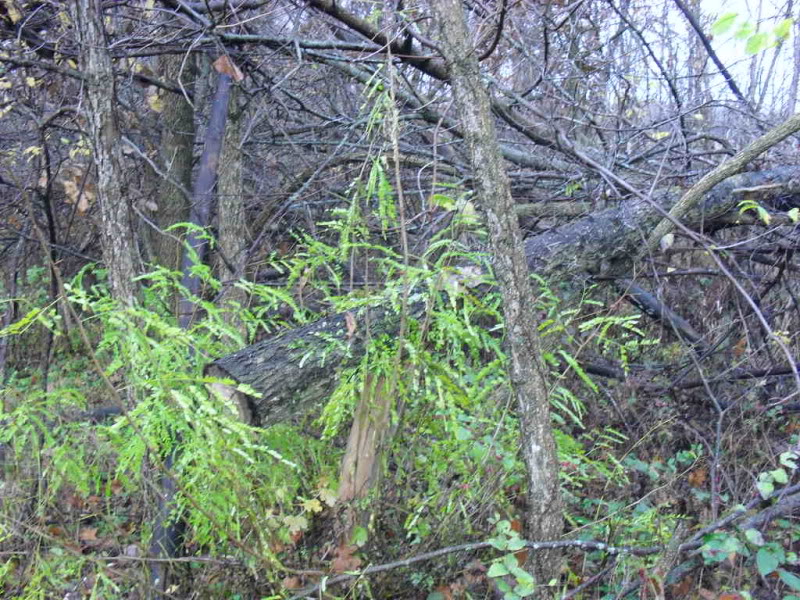
or along the edge
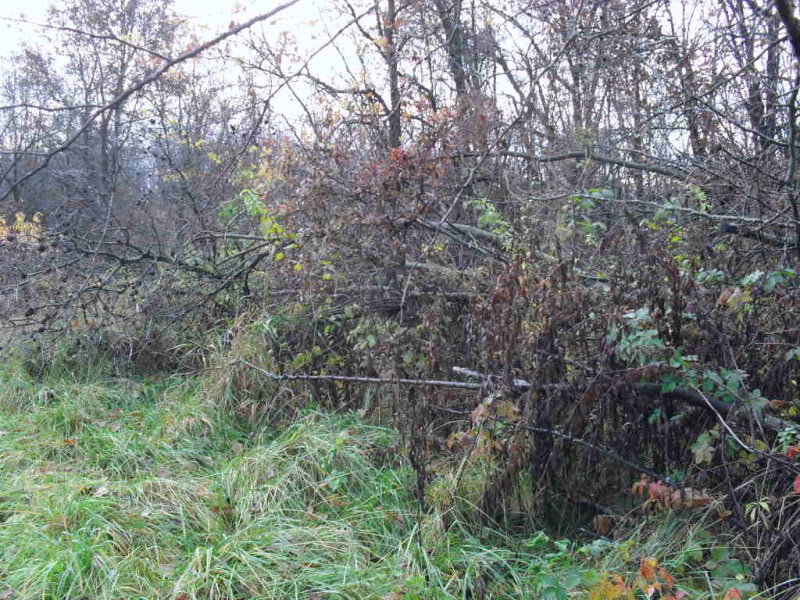
but doing so will dramatically increase traffic down specific runways
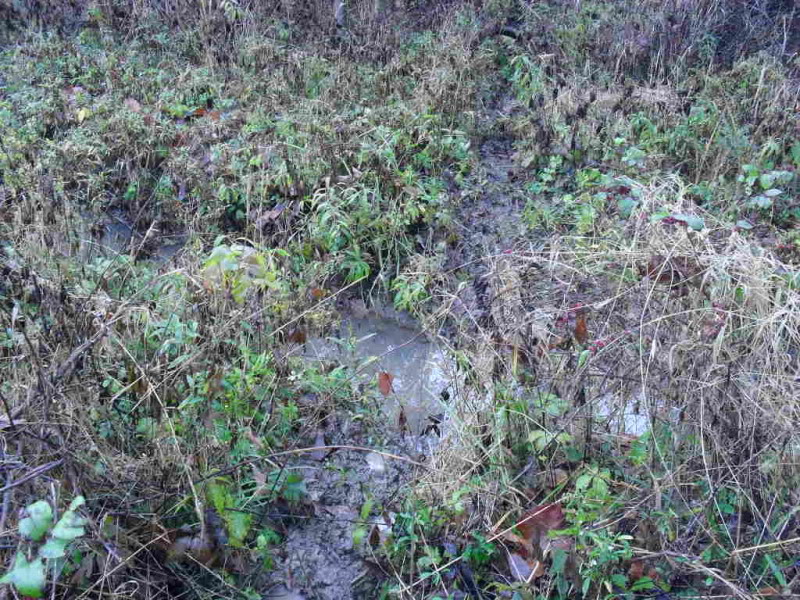
The downed tops create a natural blocking or funneling effect
http://www.iowawhitetail.com/dbltree/Hinge%
20Cutting/Tops.jpg
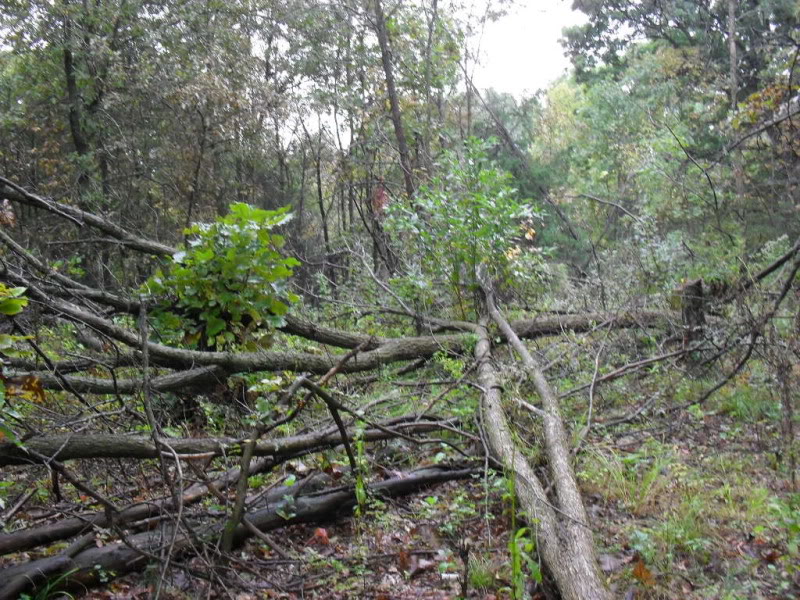
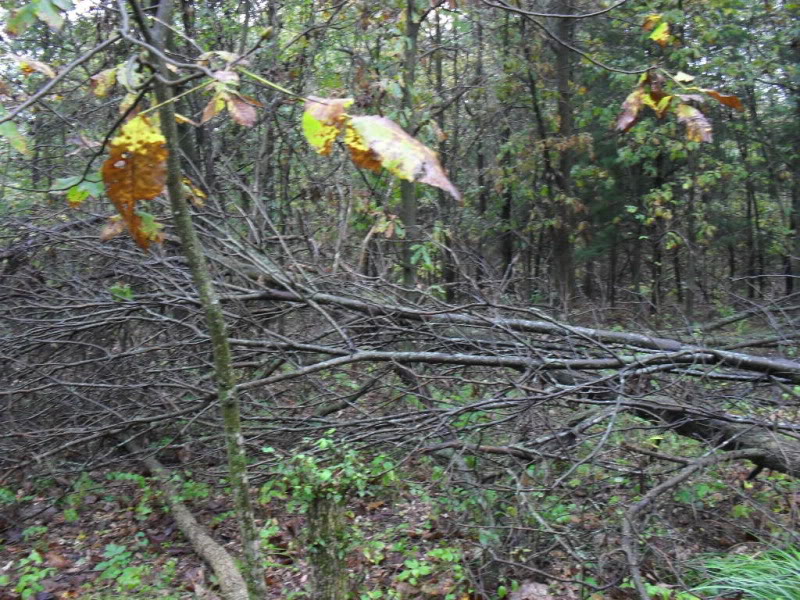
and while does may step into it to feed on the new browse traveling bucks will avoid wasting their time trying to get thru it

Extra runways can easily be blocked
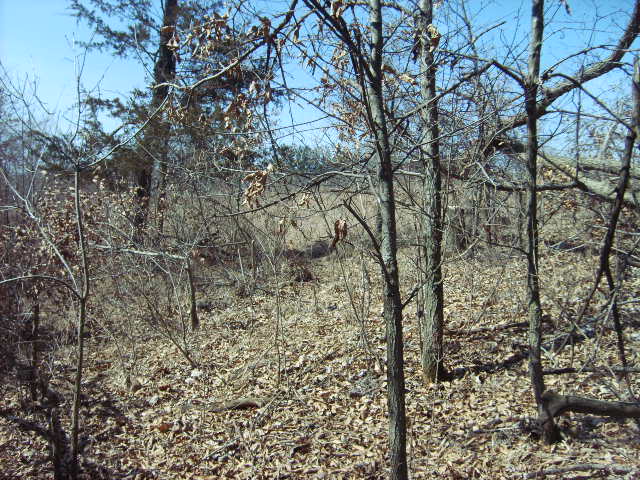
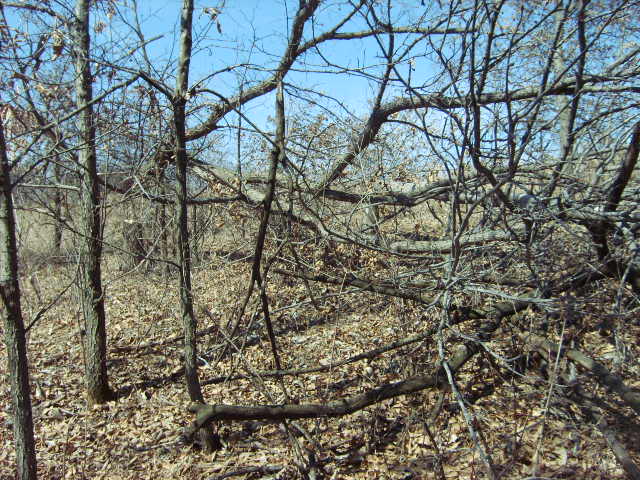
and deer will quickly develop new travel habits
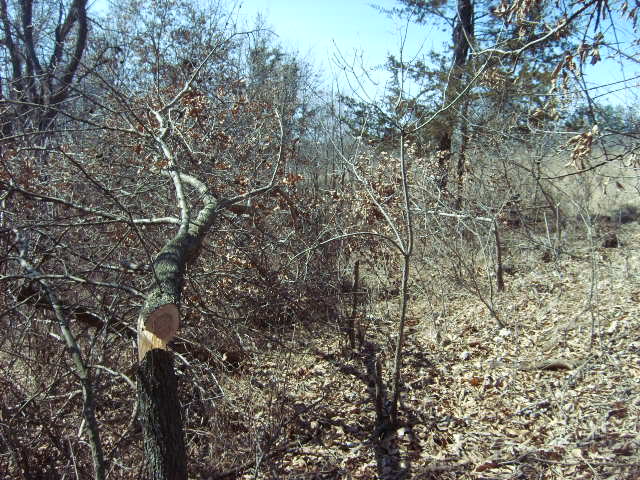
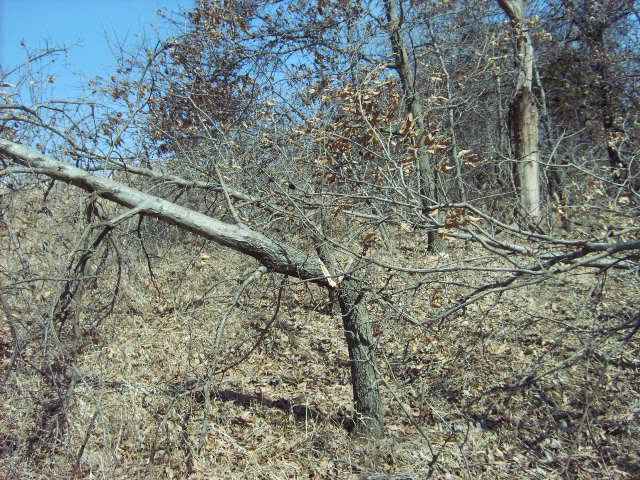
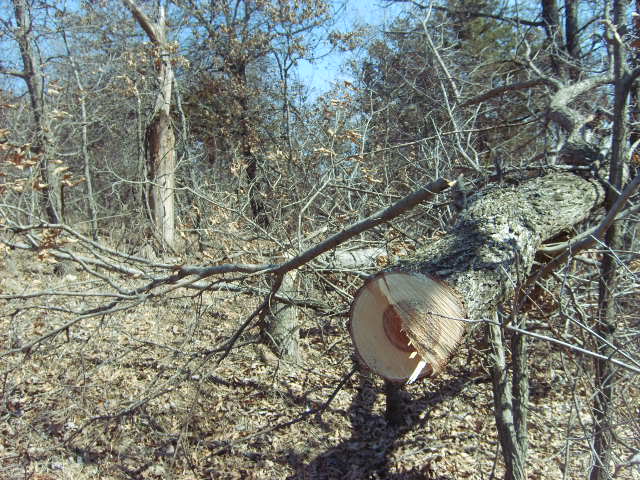
Often it does not take much to discourage deer from using a "short cut" and keeping them headed out a main runway
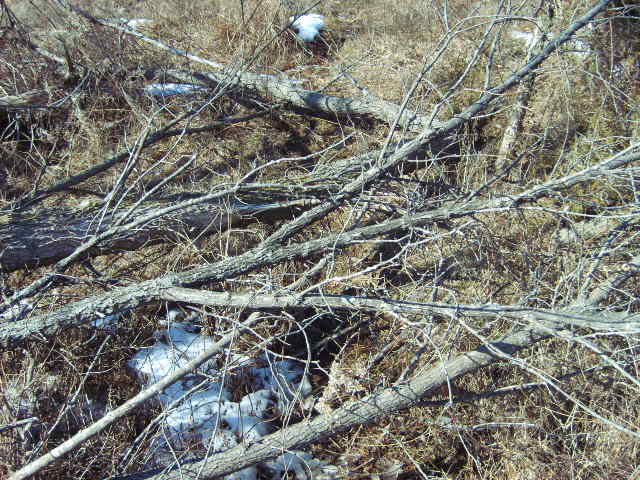
Funneling deer allows me to keep better tabs on mature deer using my property by using trail cams at strategic funnel sites.

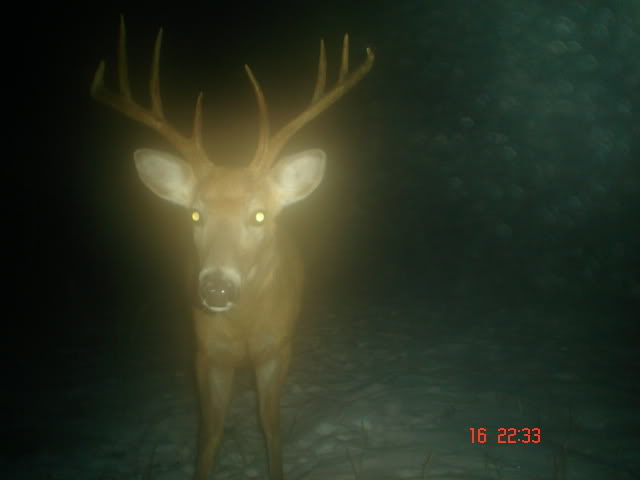

Of all the habitat improvements a landowner can make, hinging cull trees is perhaps the single most effective improvement. It requires virtually no expense other then a chainsaw and some effort on a late winters day.
Late winter and early spring are usually the most effective time to work on hinging when sap is rising. If you have invasive trees such as locusts add some Tordon RTU to the stump to keep it from coming back. Others such as maples however usually provide browse and cover and should be left alive.
In areas that have few oak trees I hand plant them each spring into the downed tops. It is important NOT to hinge your entire property in one season, so it in portions so that one has different stages of new browse coming on over a period of years.
Eventually one can start over in the fist cutover area tipping the trees over once again.
As I mentioned in the beginning, always start by walking your property with your forester to learn to identify good mast trees. Cost share for TSI is usually available through a variety of programs and your NRCS office can be helpful in that area.
TSI is NOT hinge cutting, it is culling competitive trees around crop trees however in many cases the trees can be culled via hinging and two birds killed with one stone.
Get started on improving your whitetail bedding and browse just by firing up the chainsaw!
Last edited:

